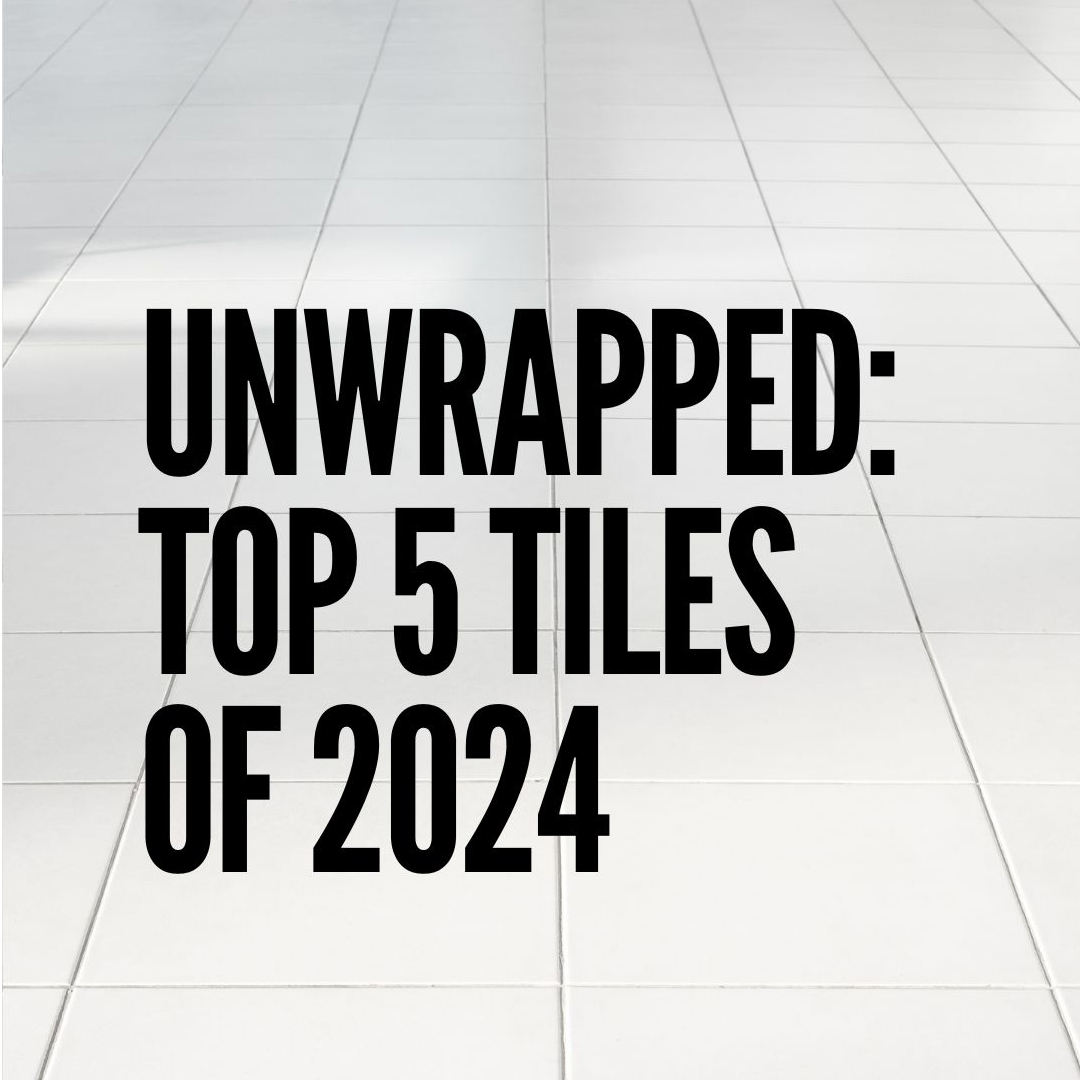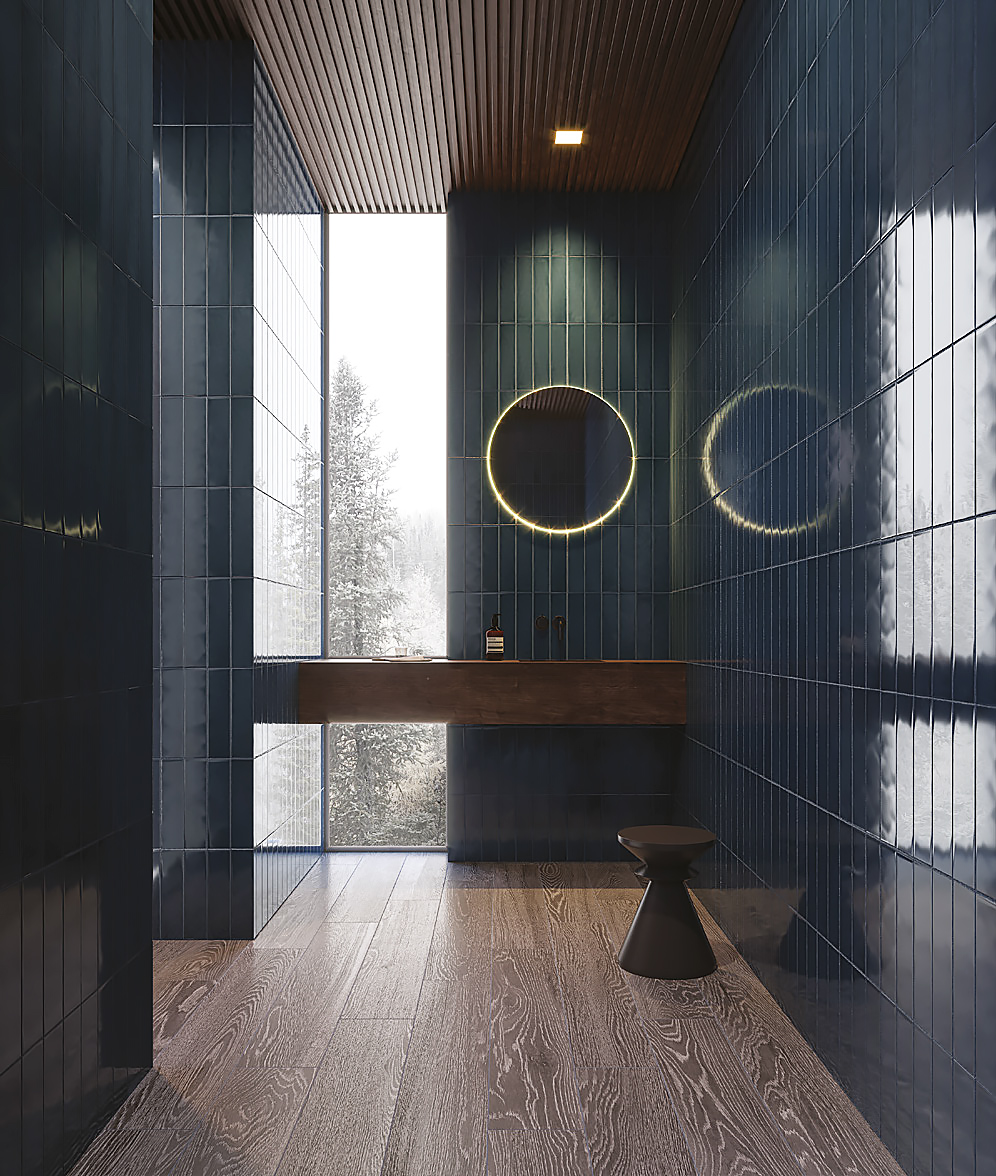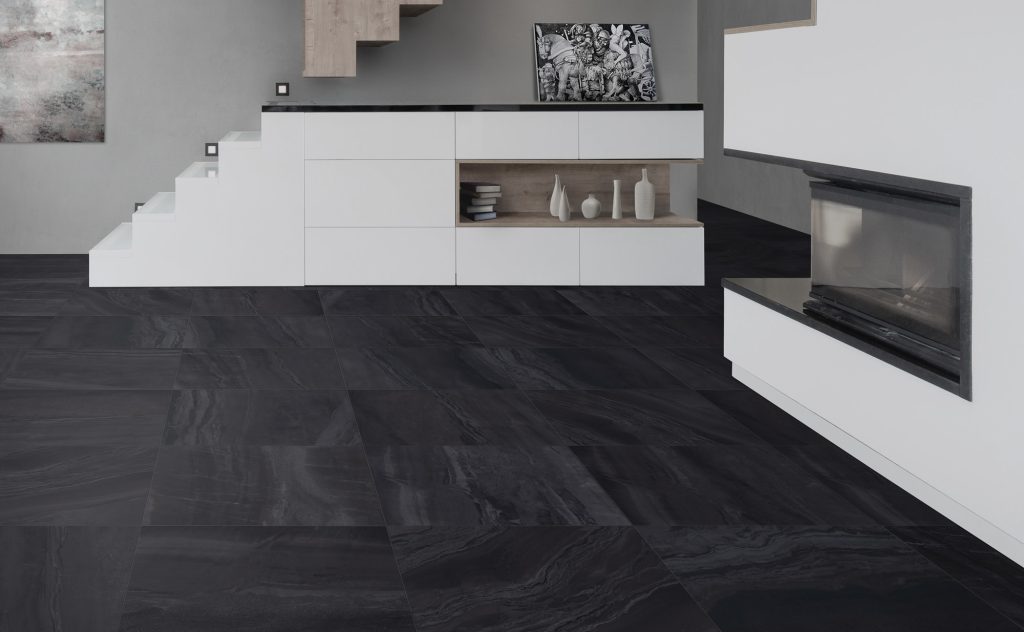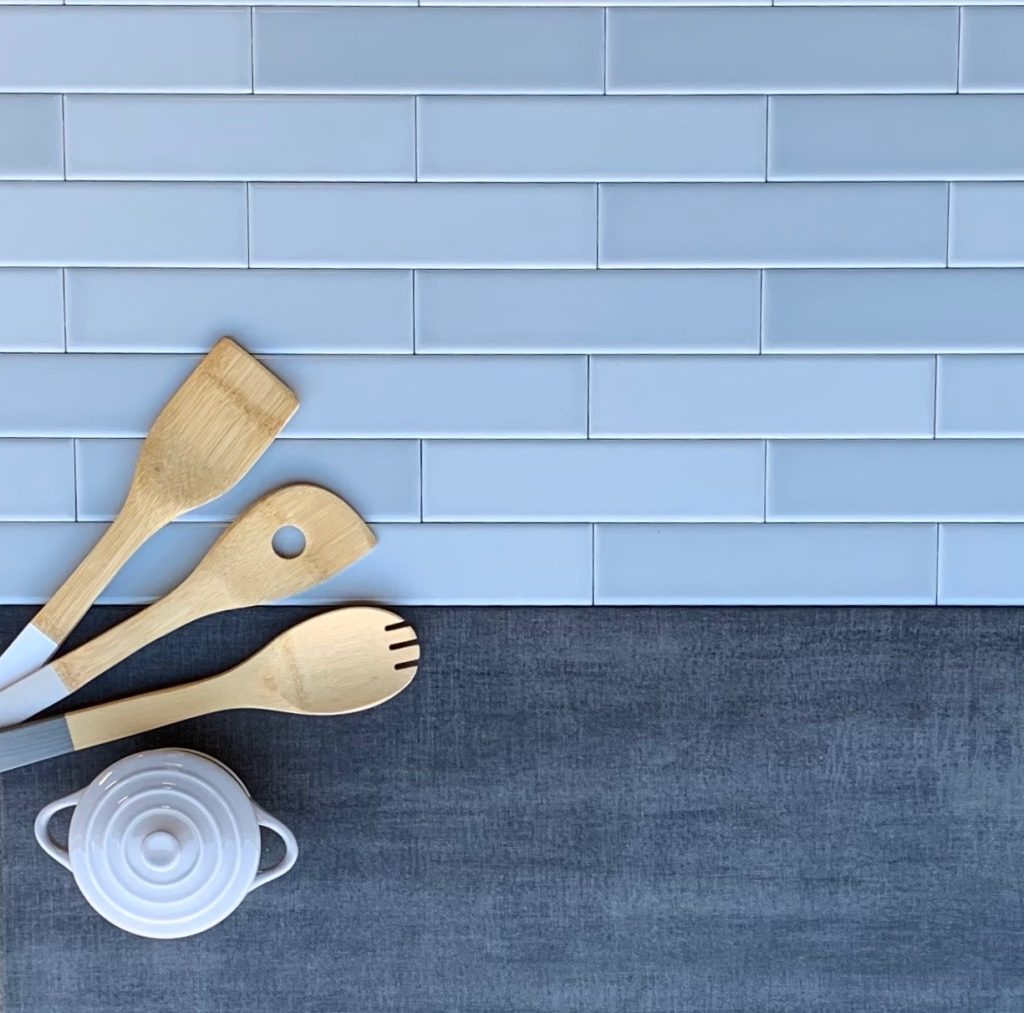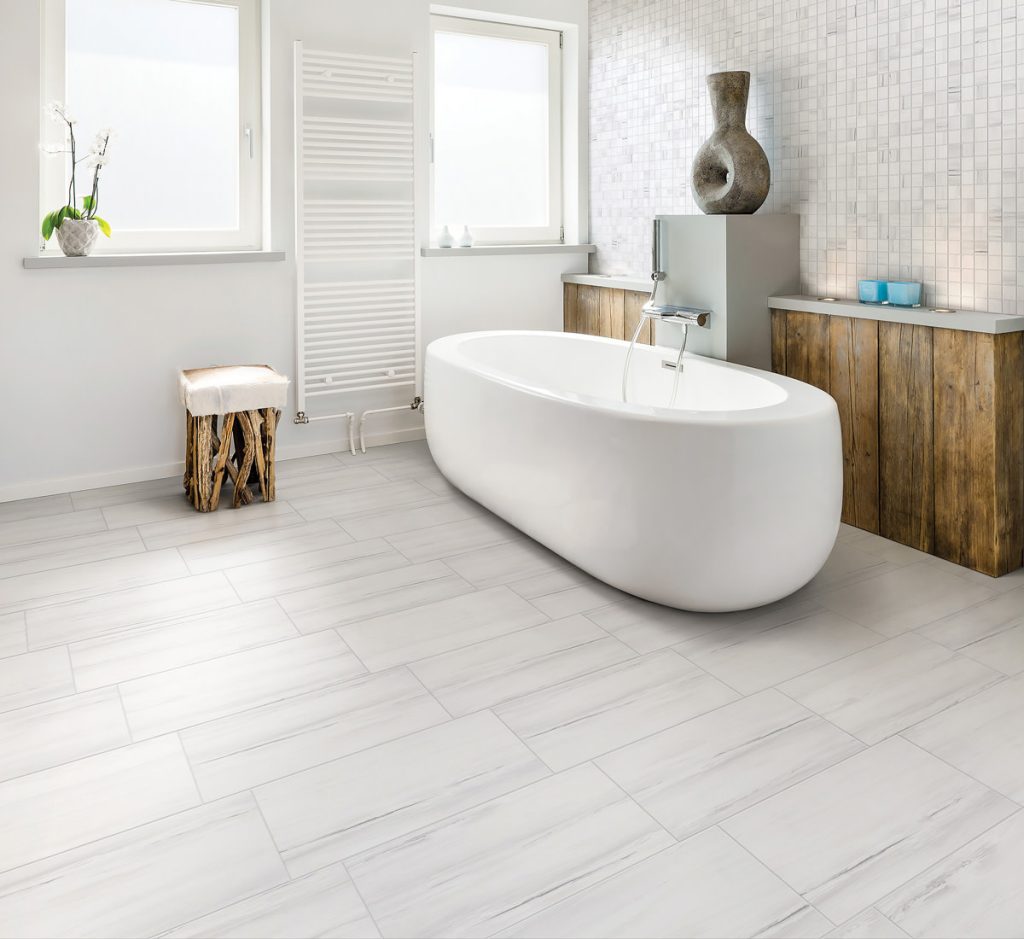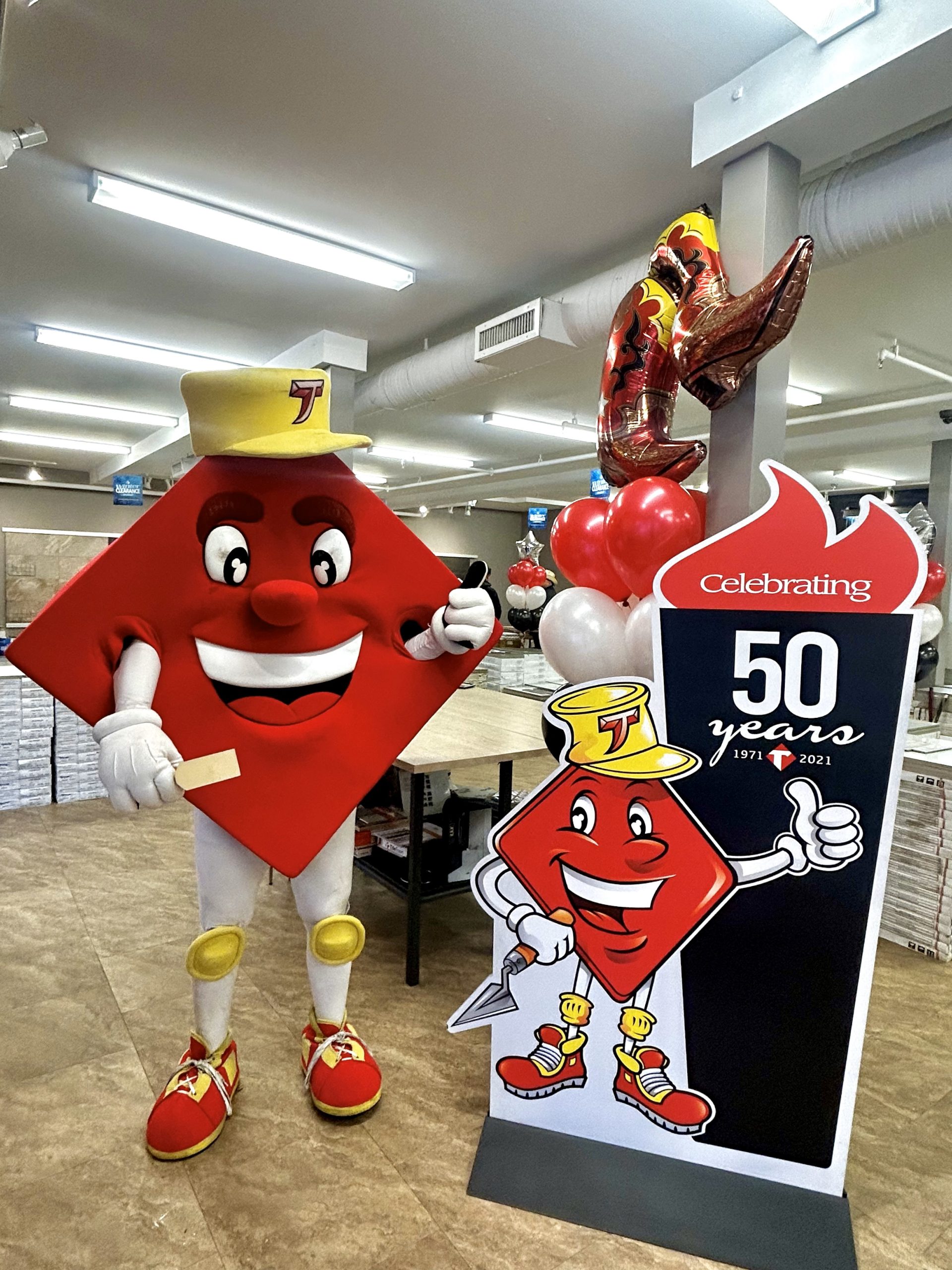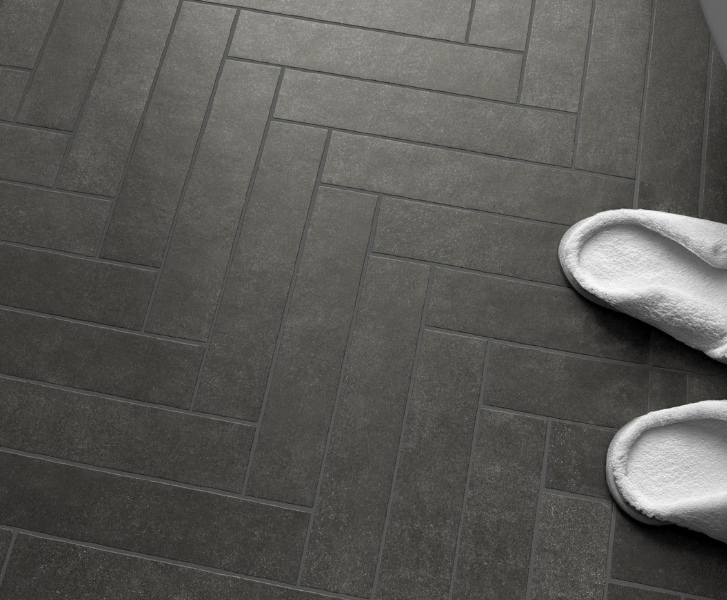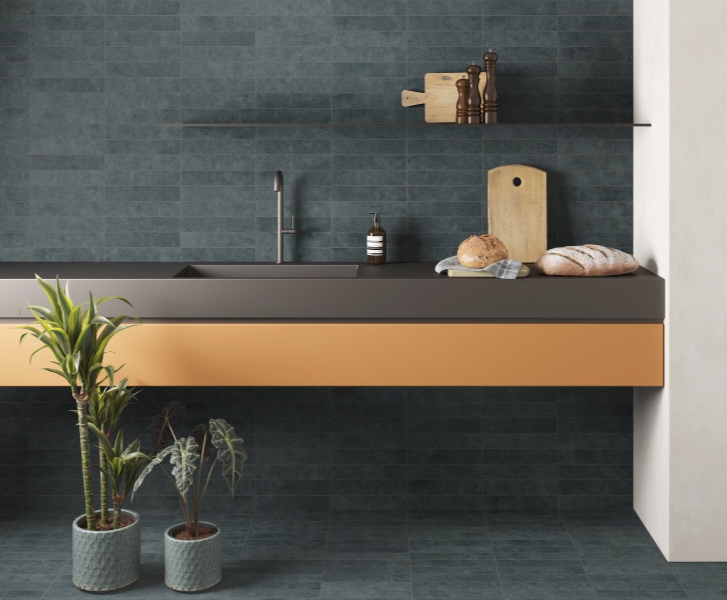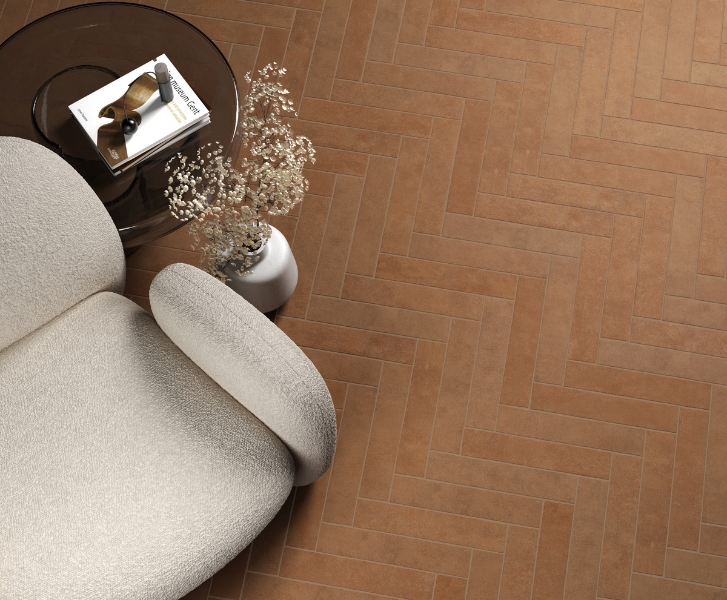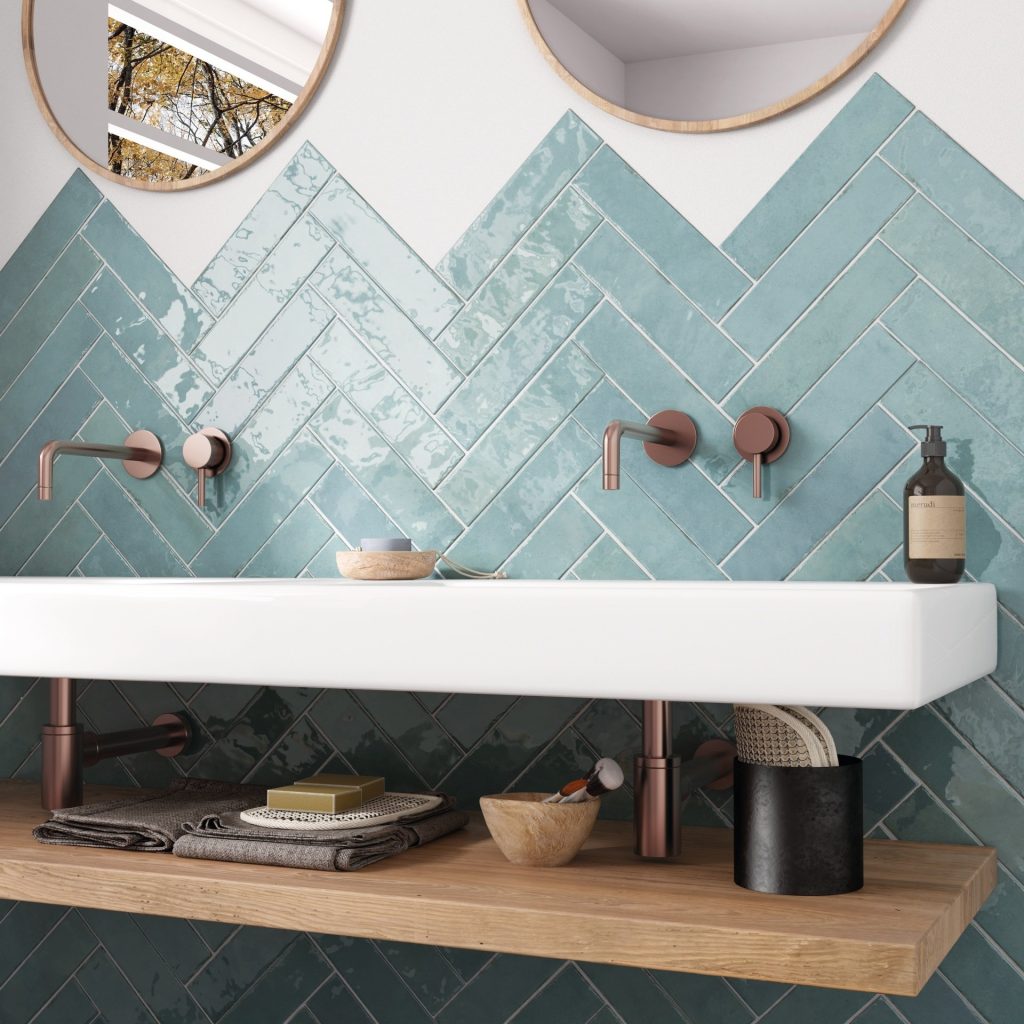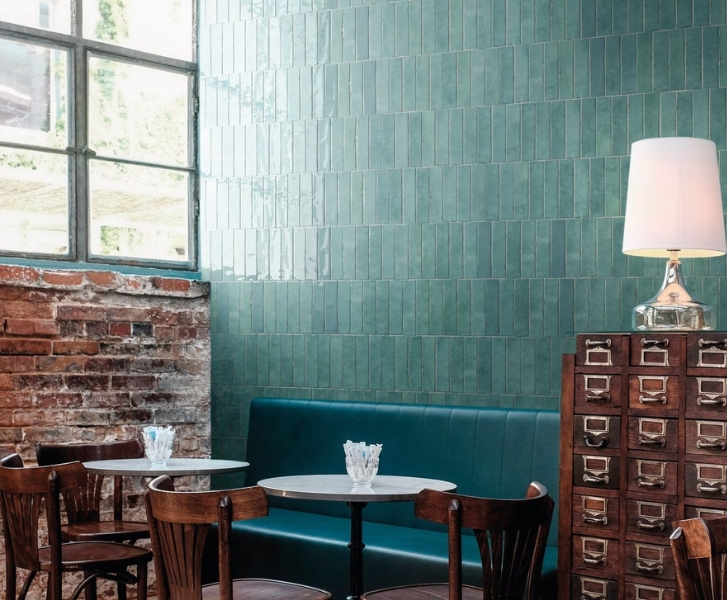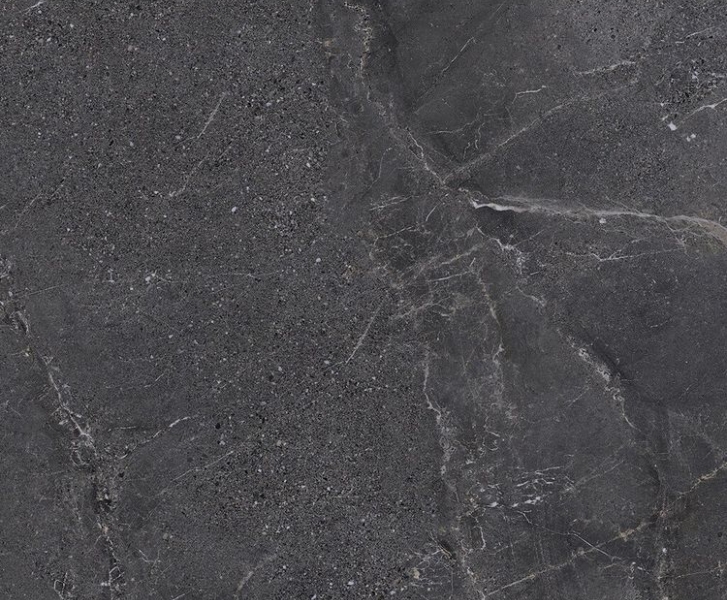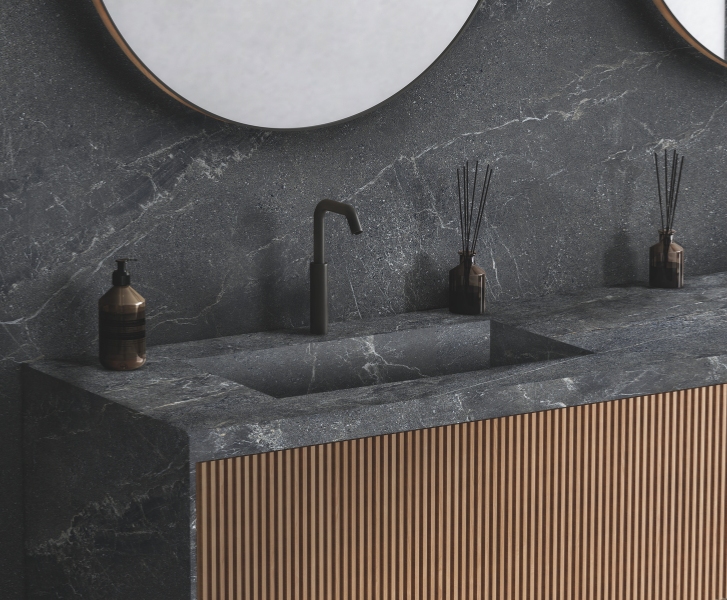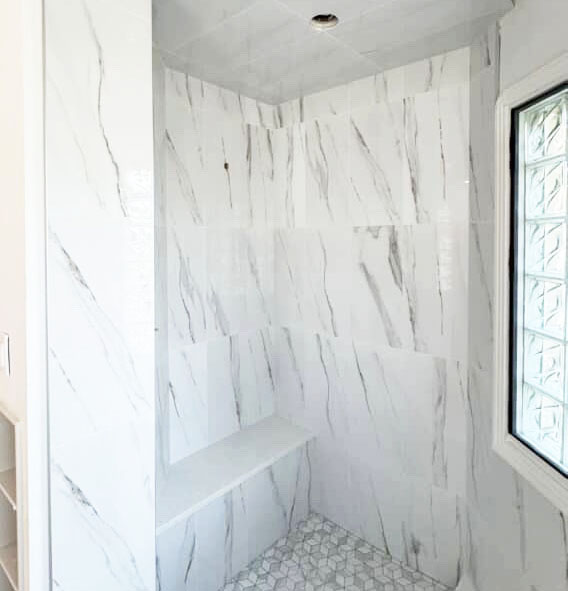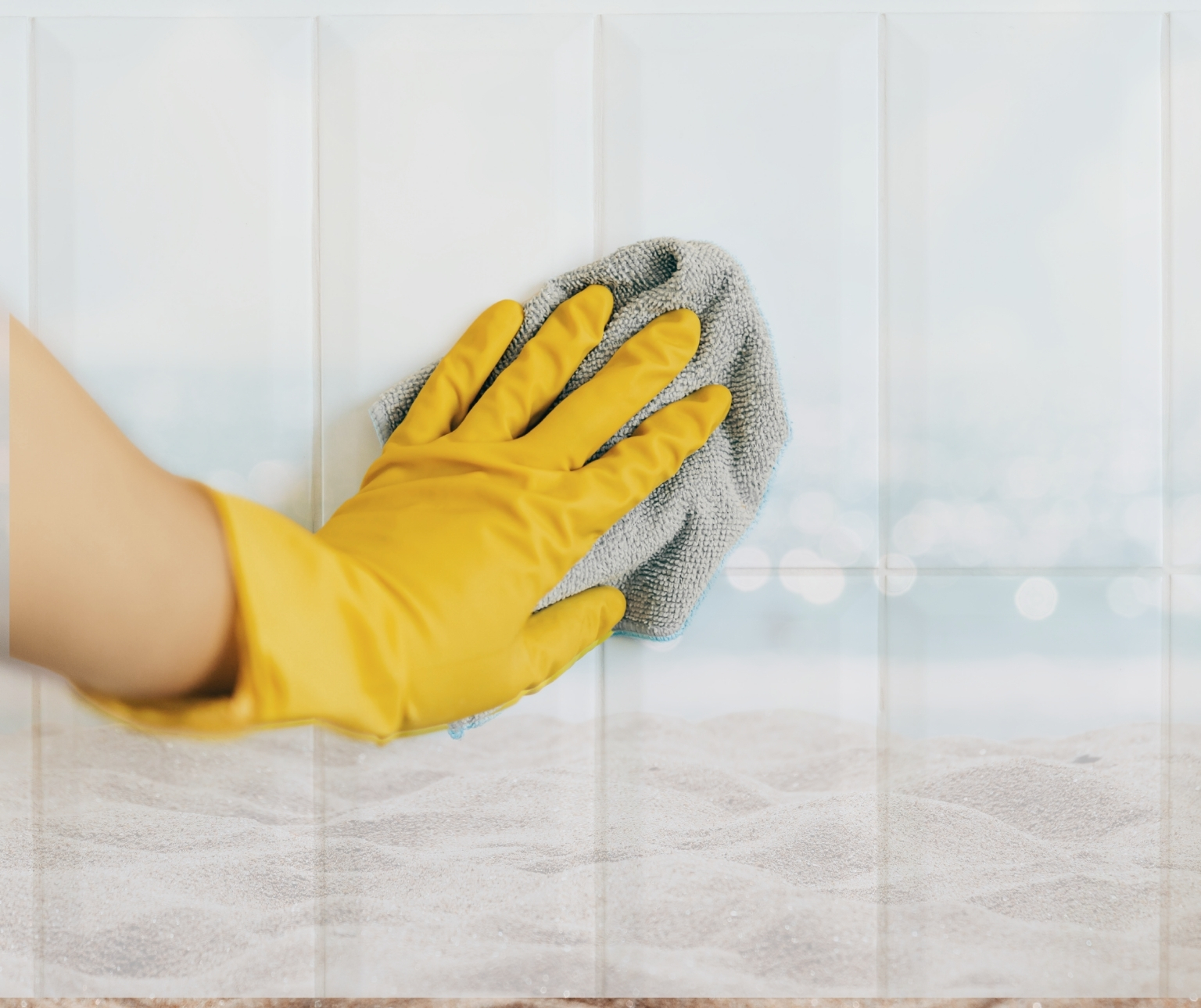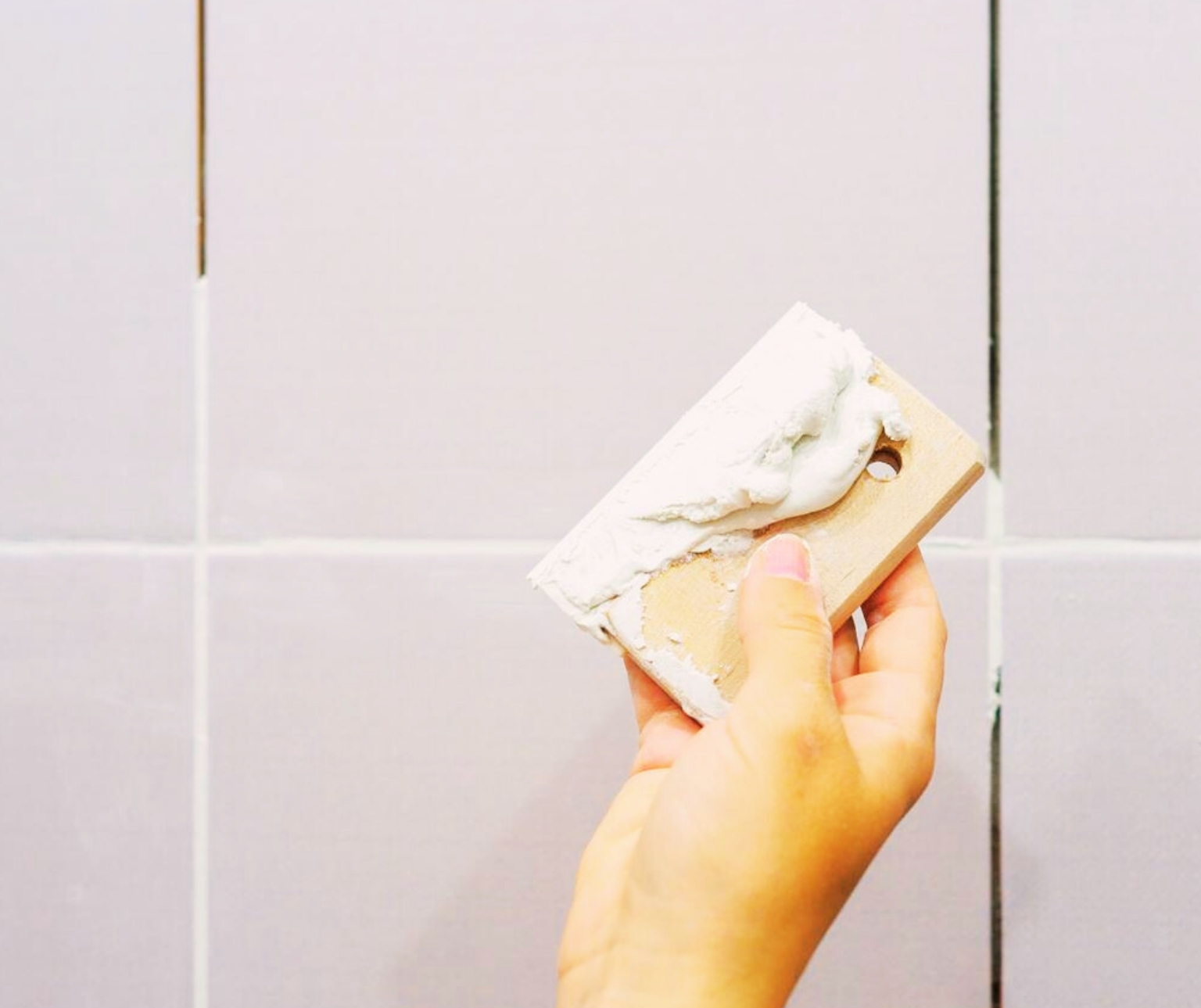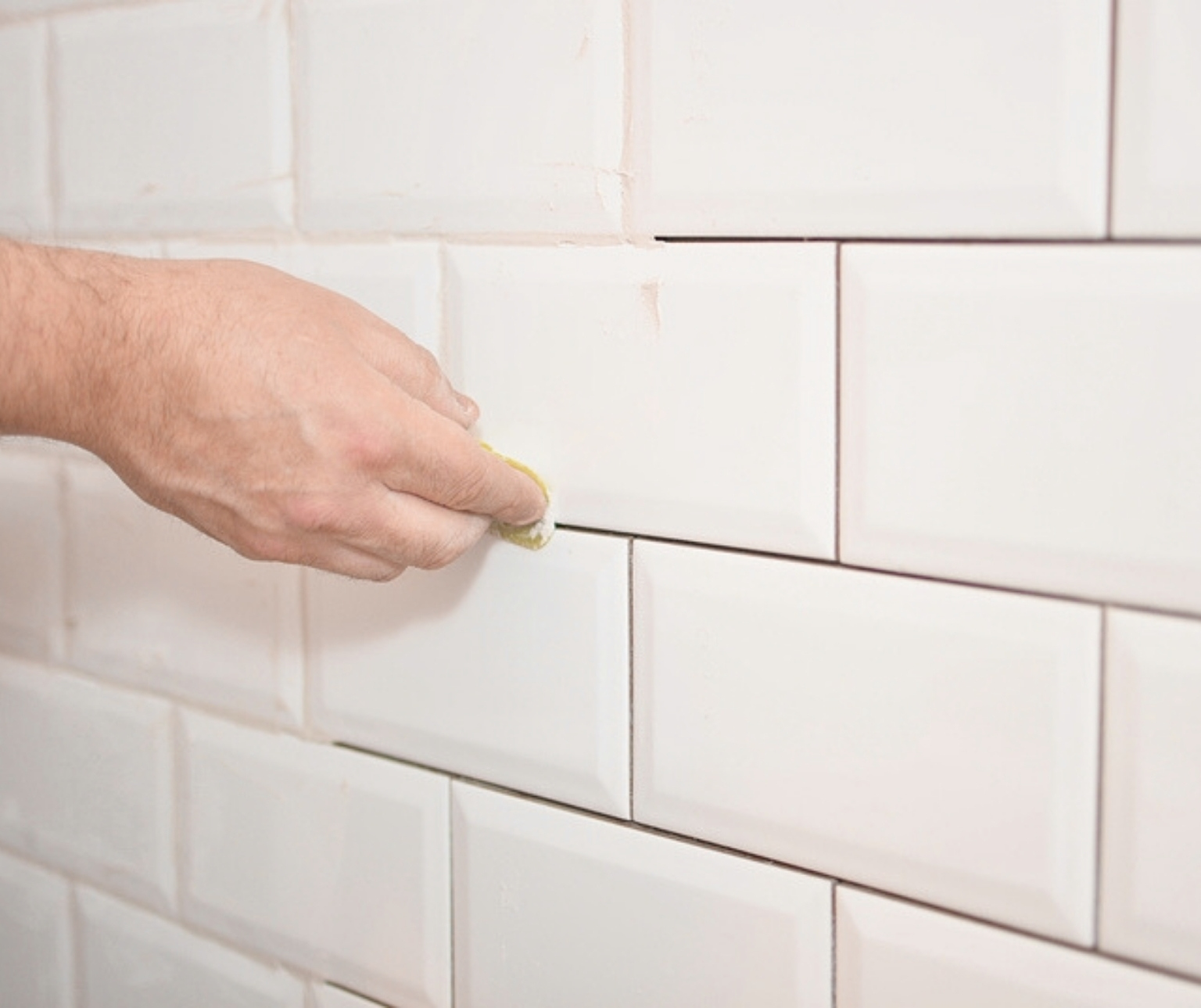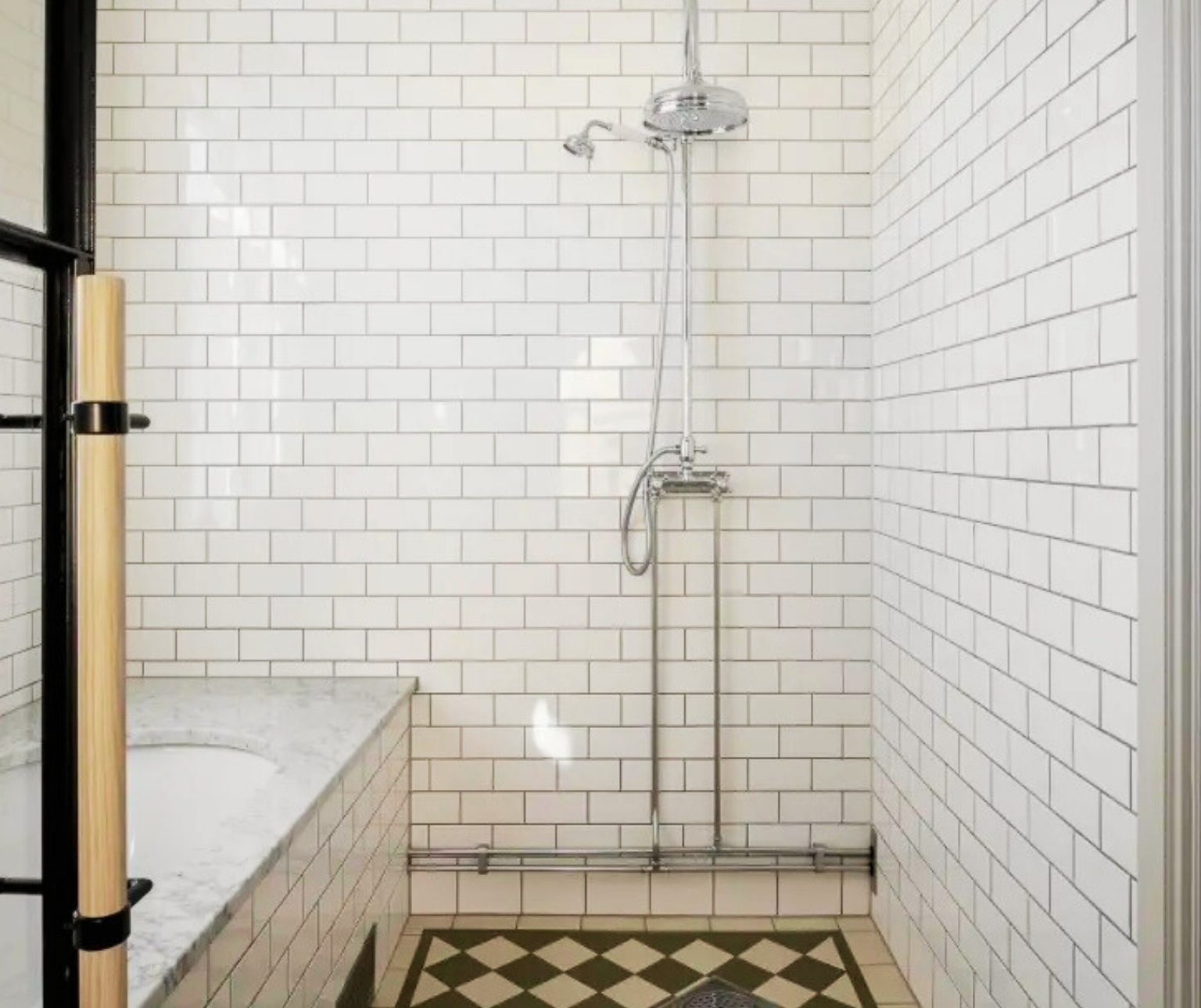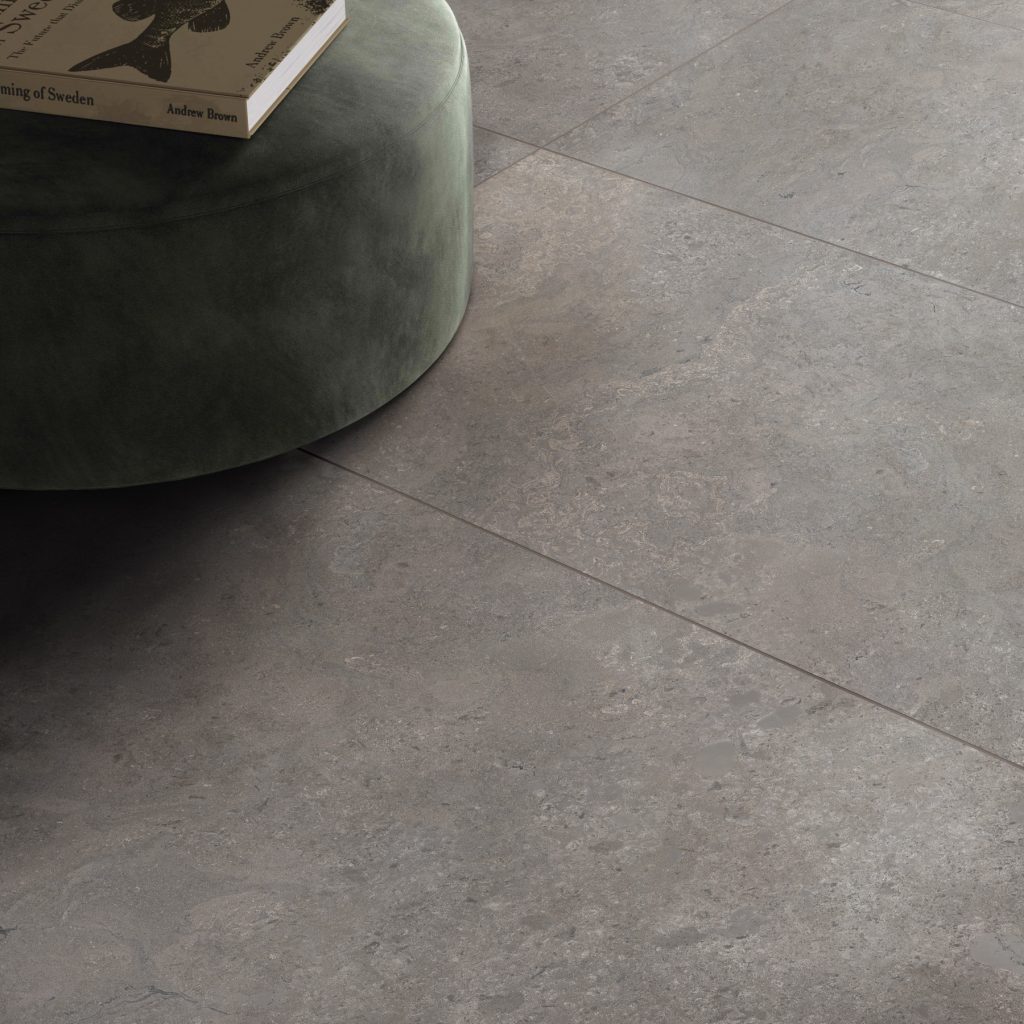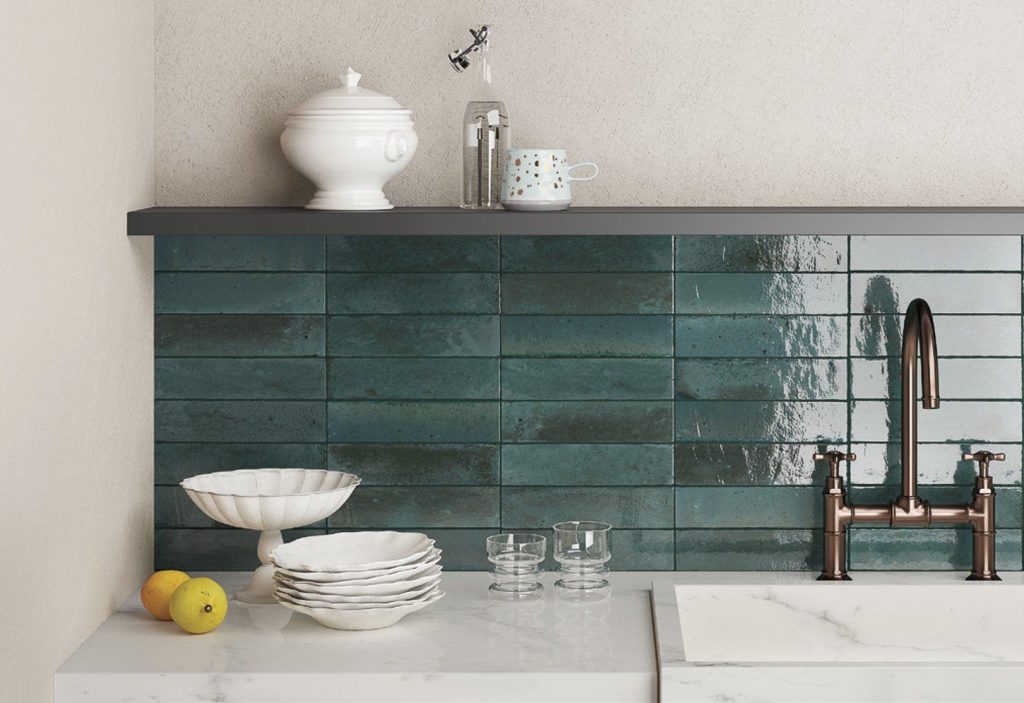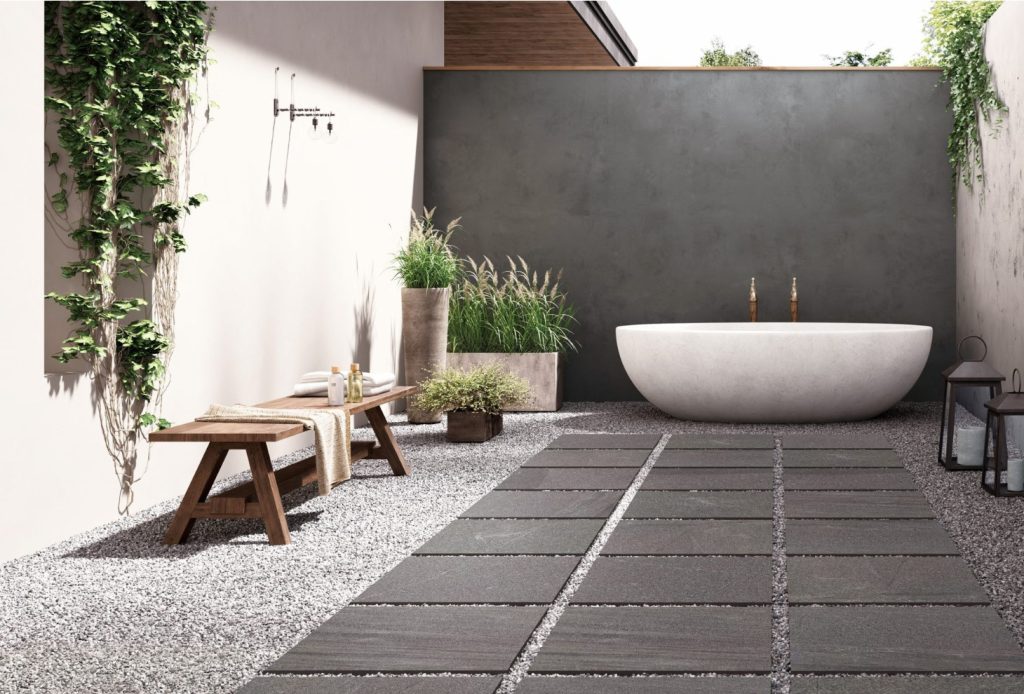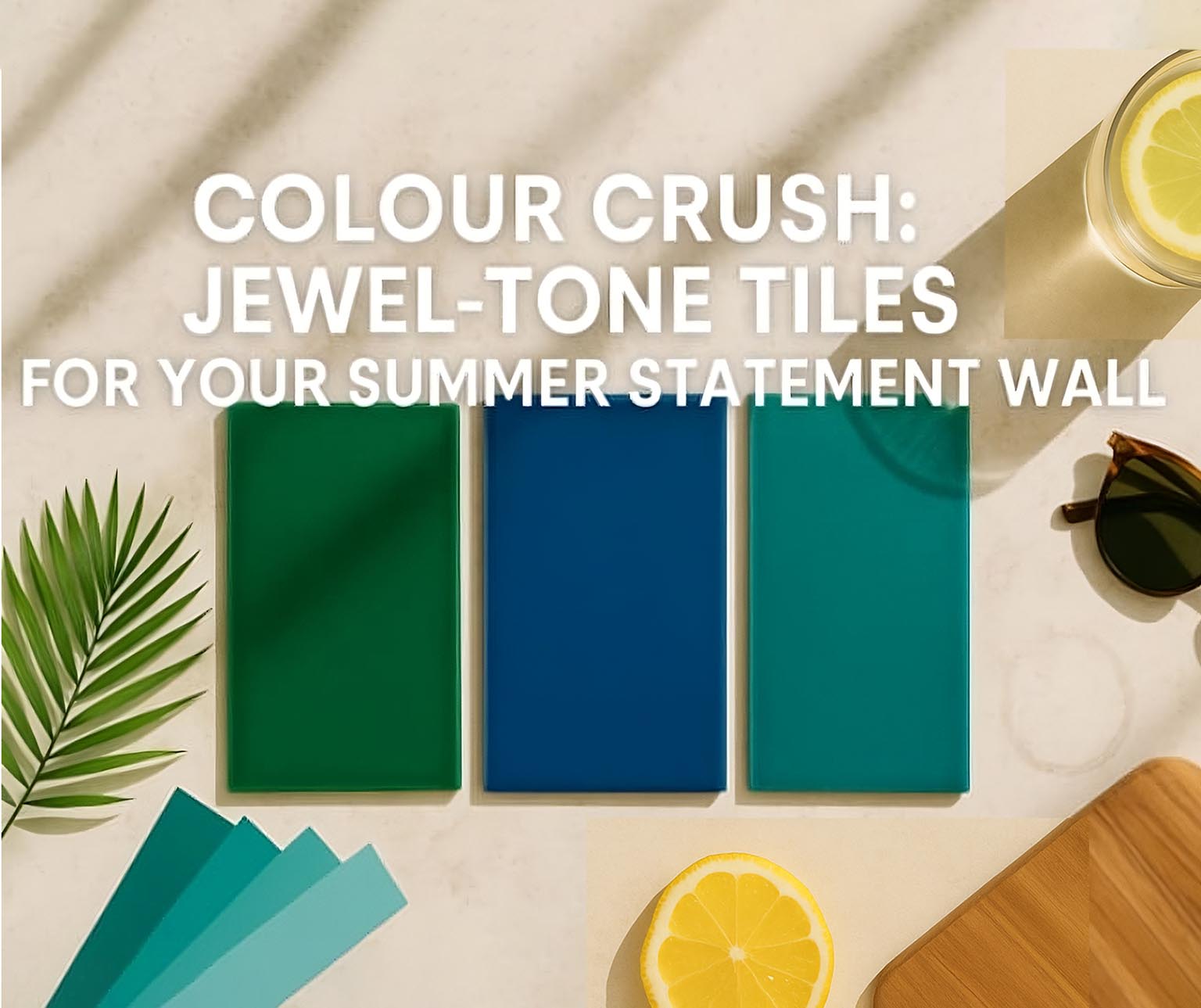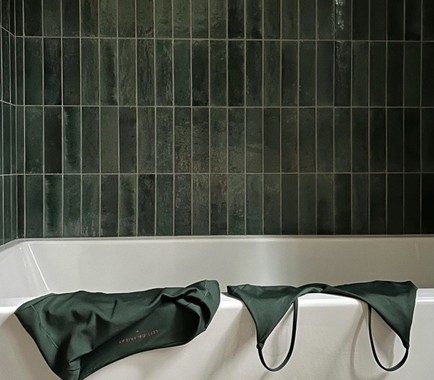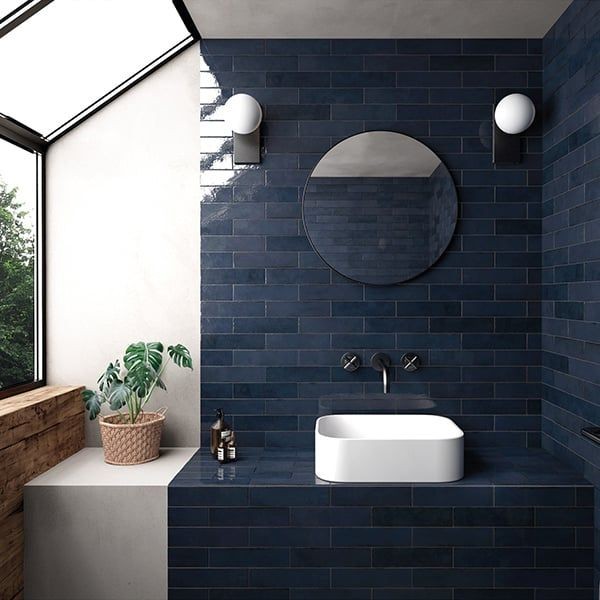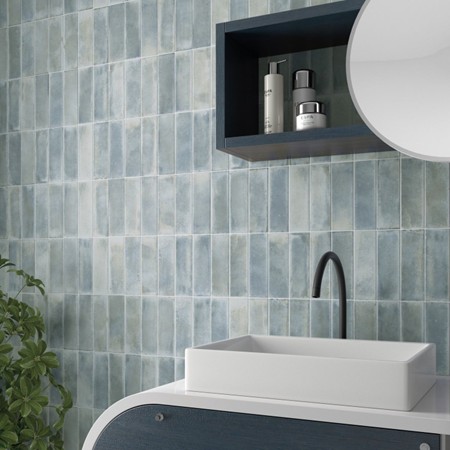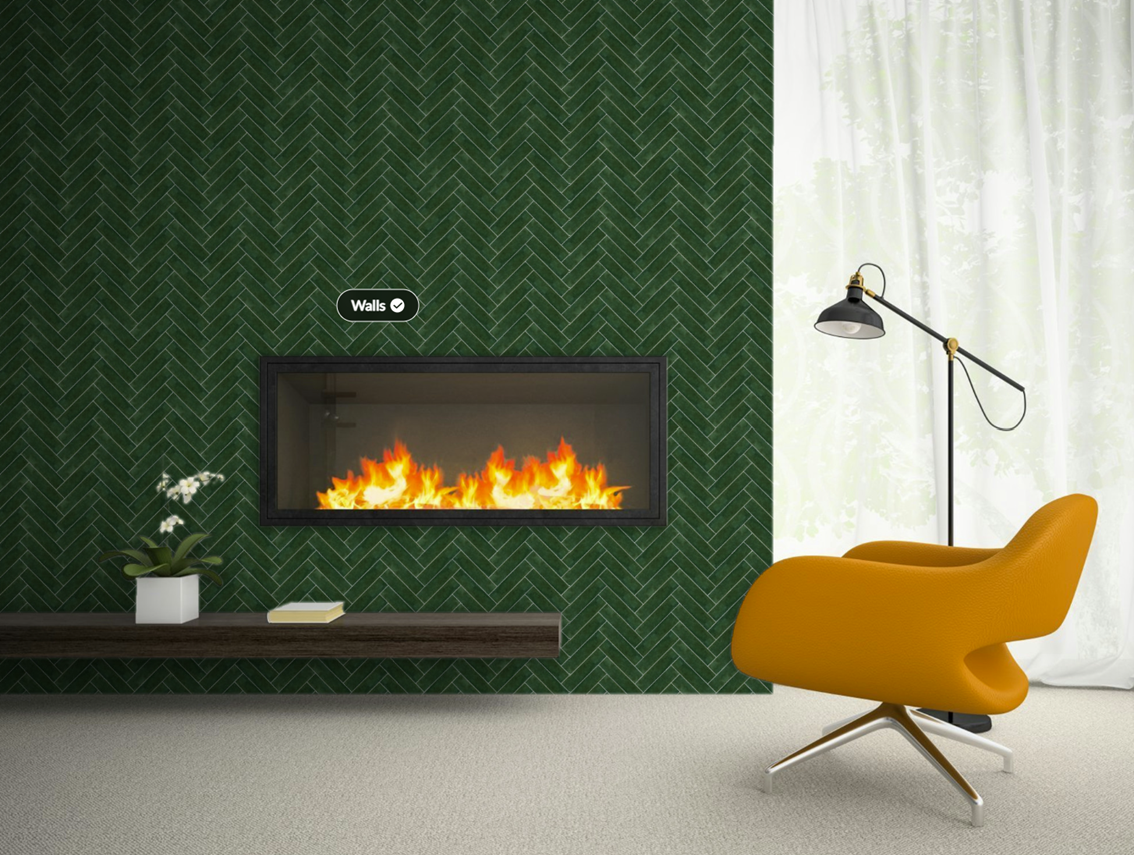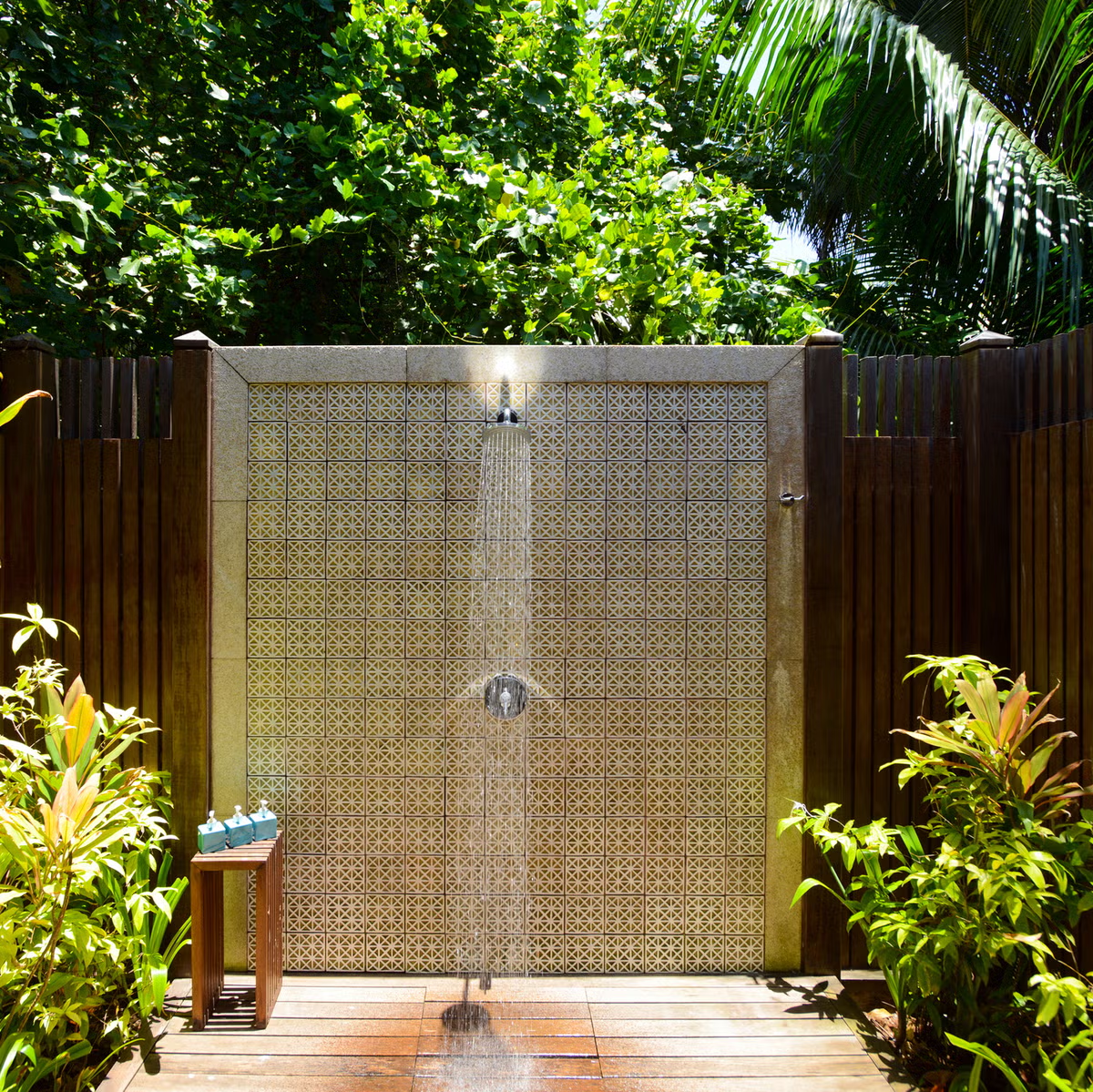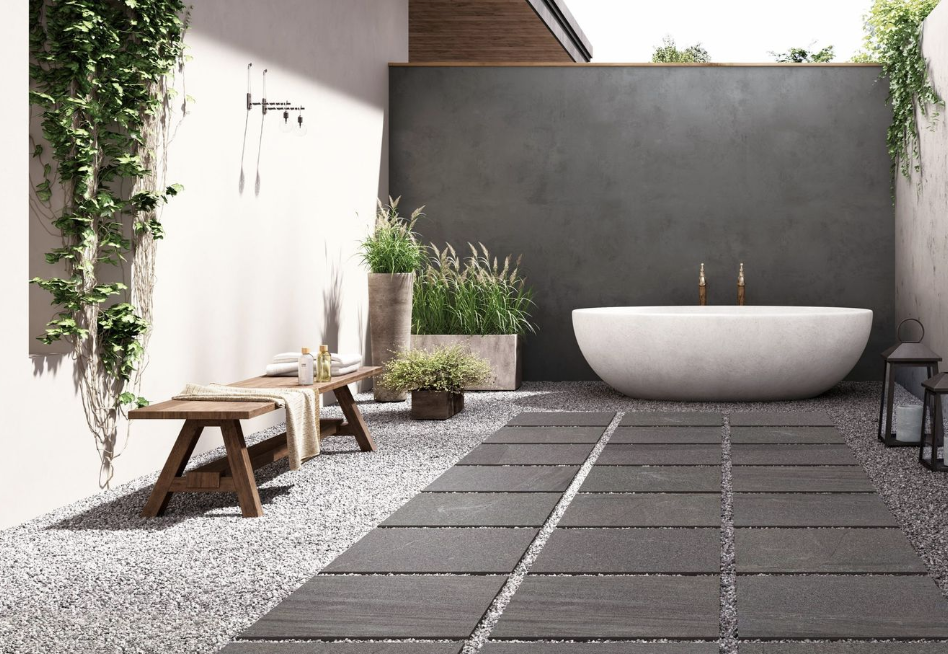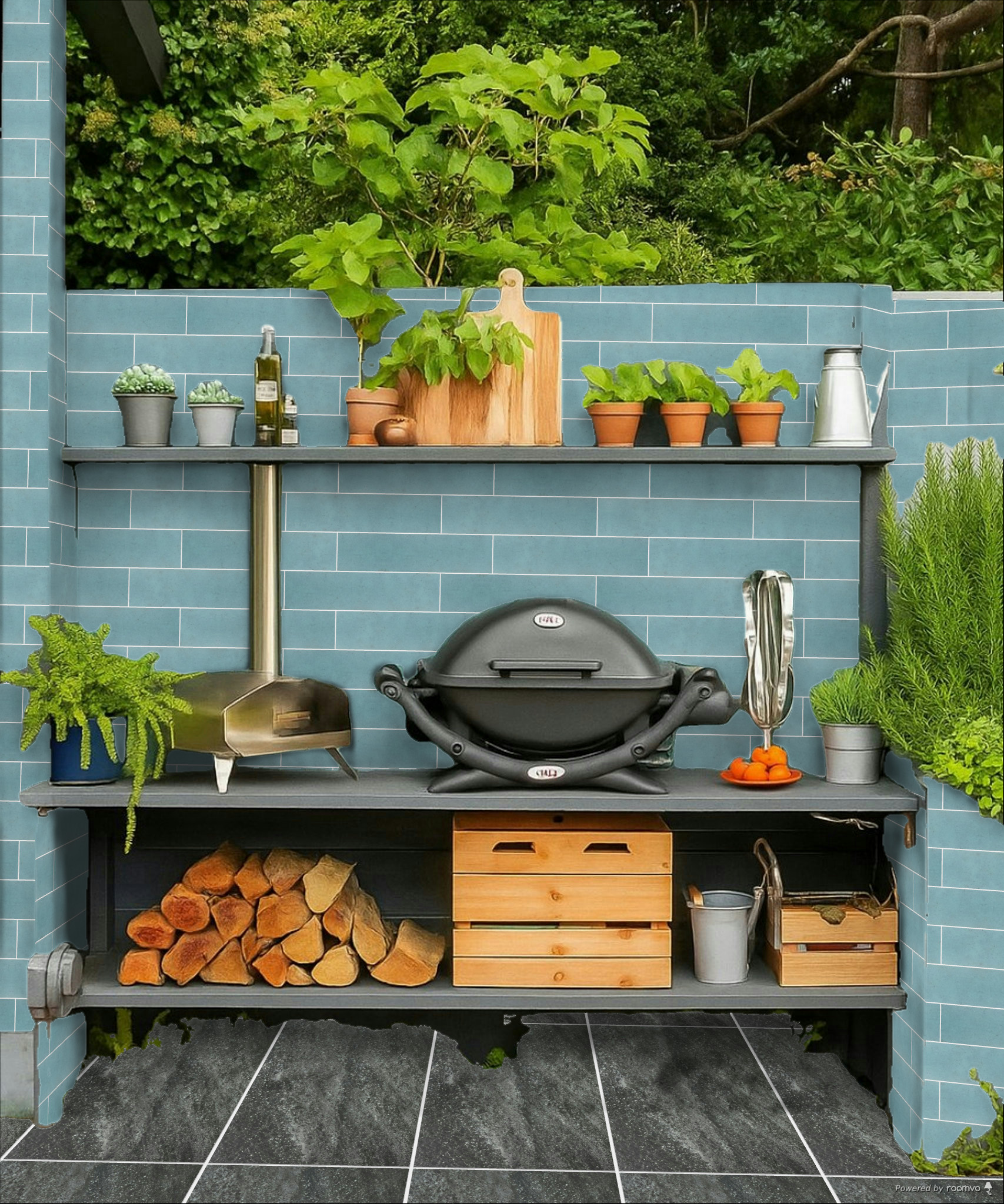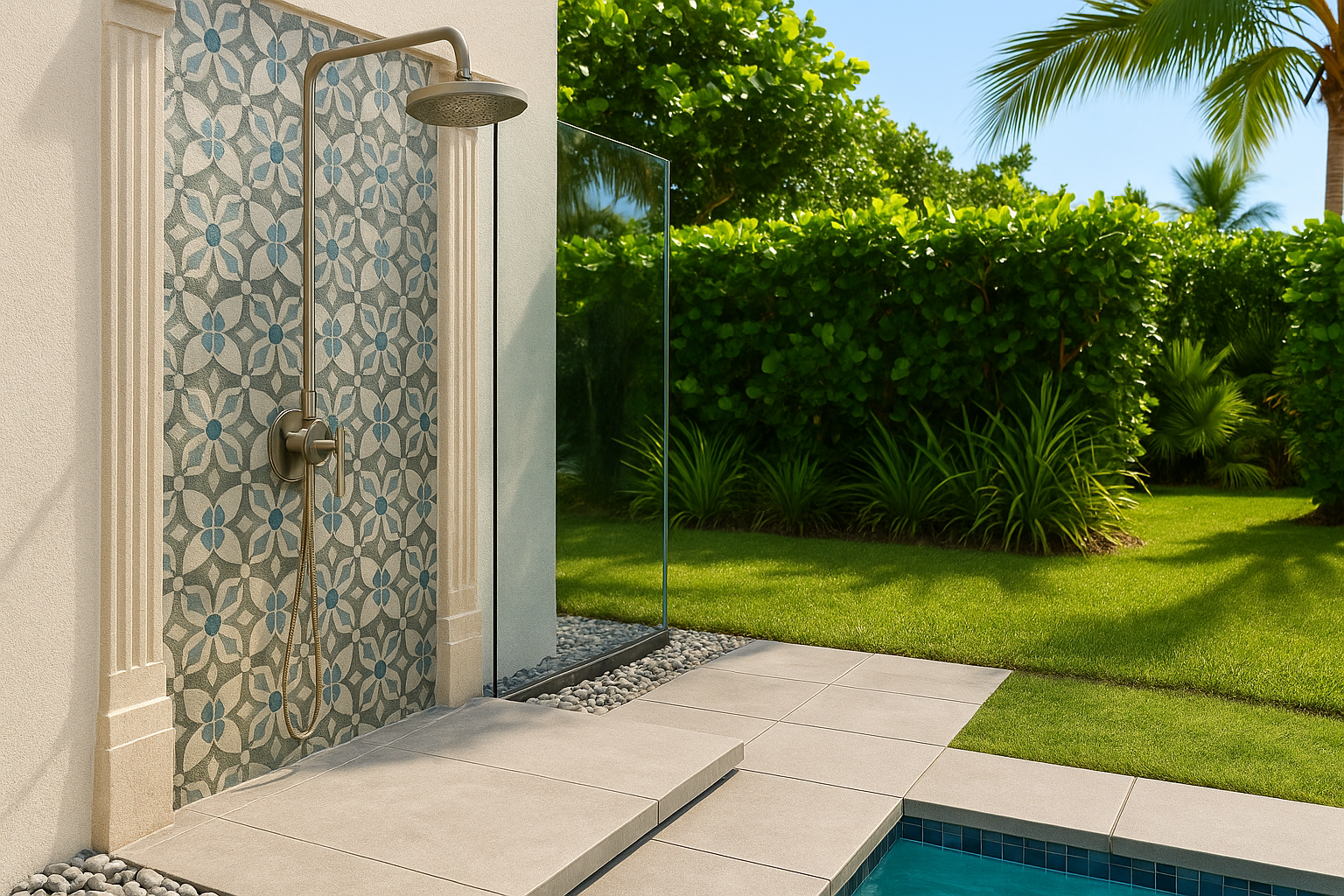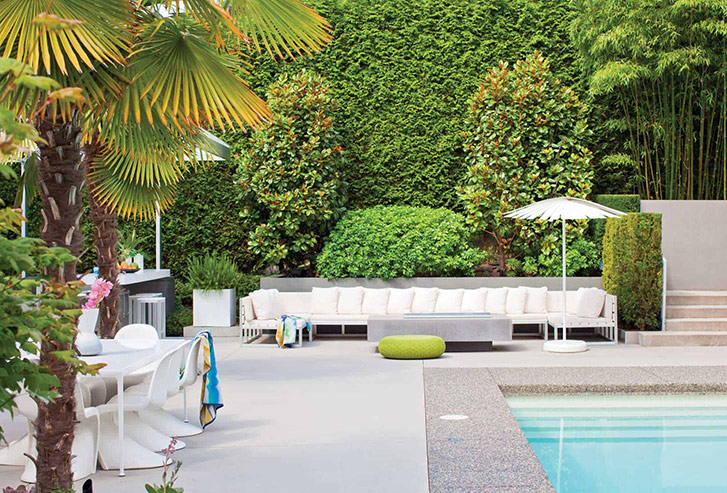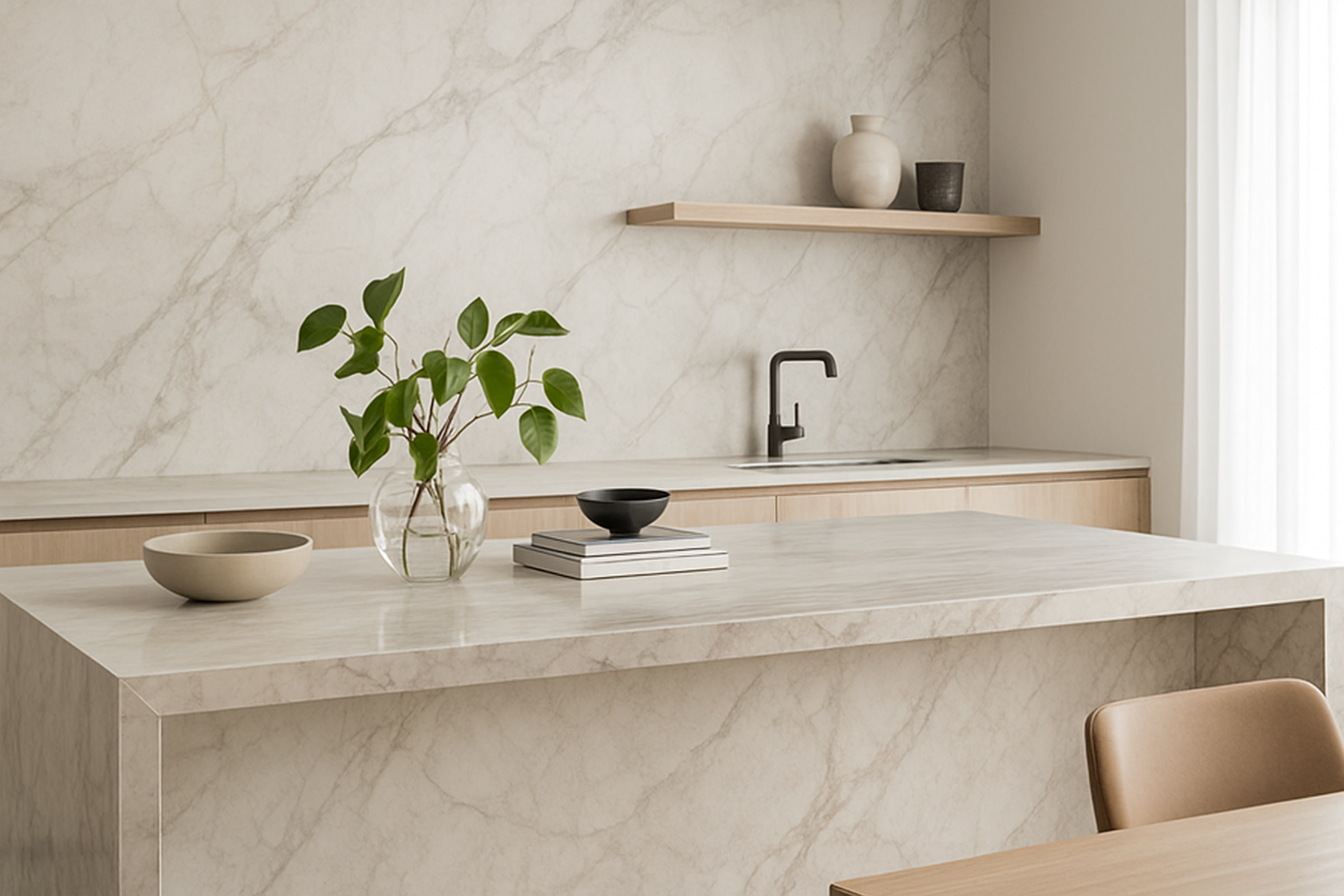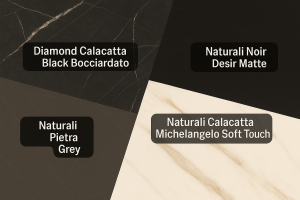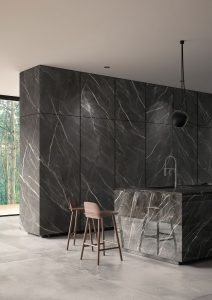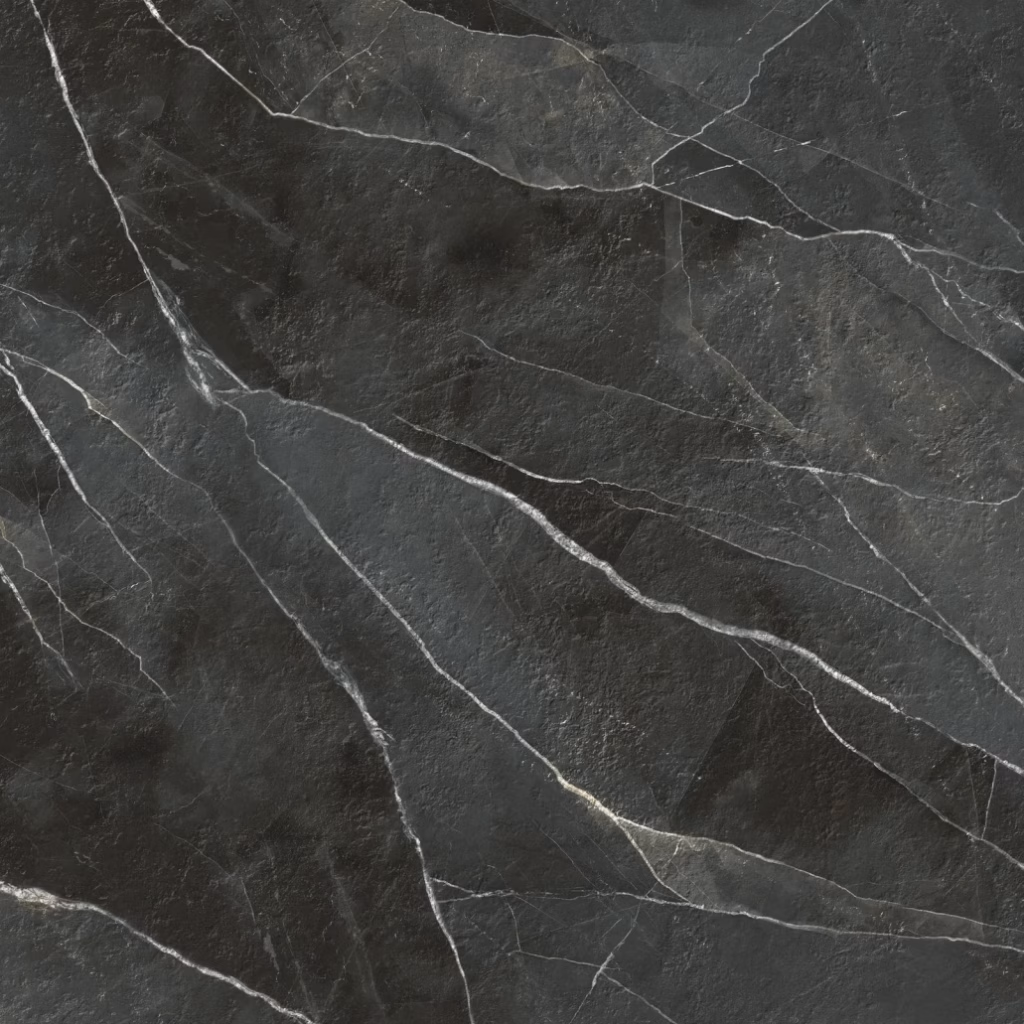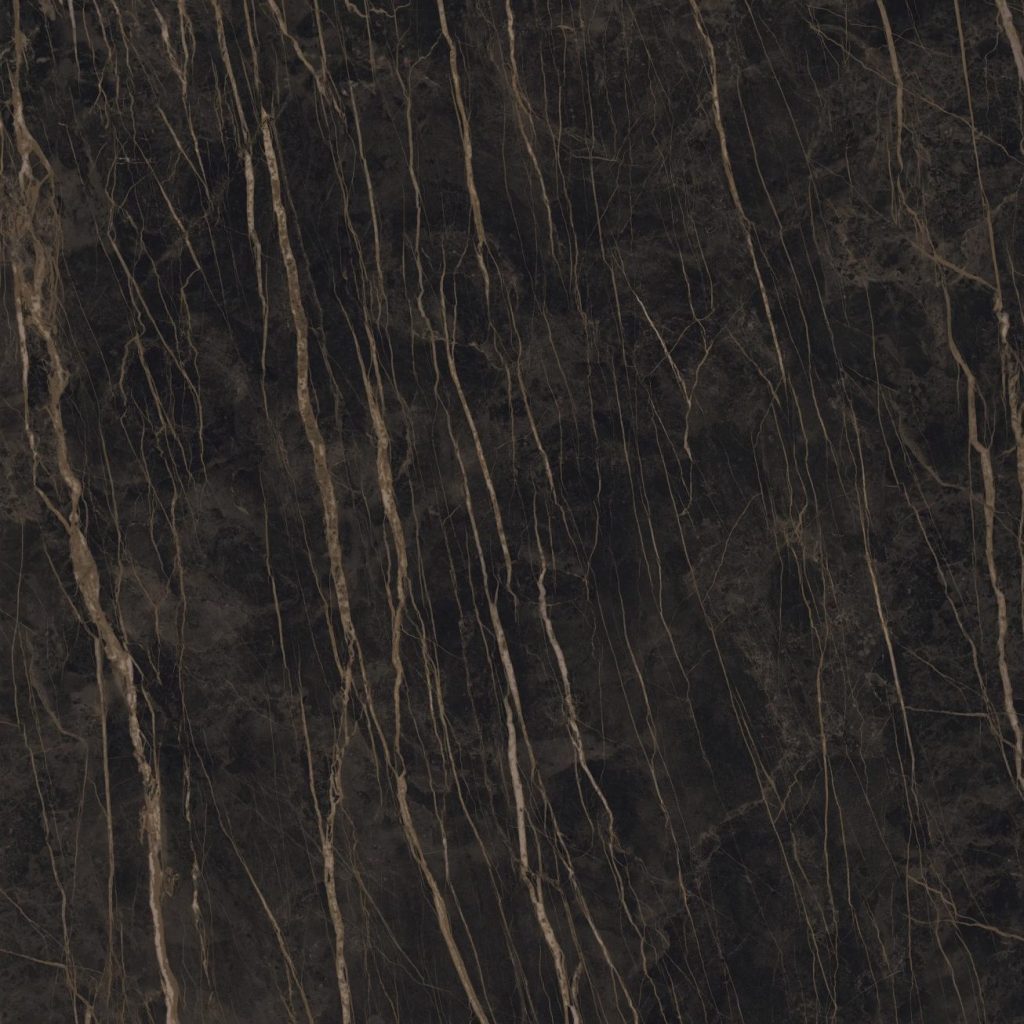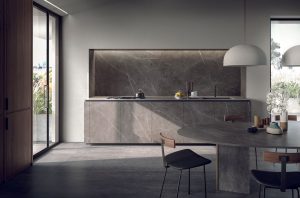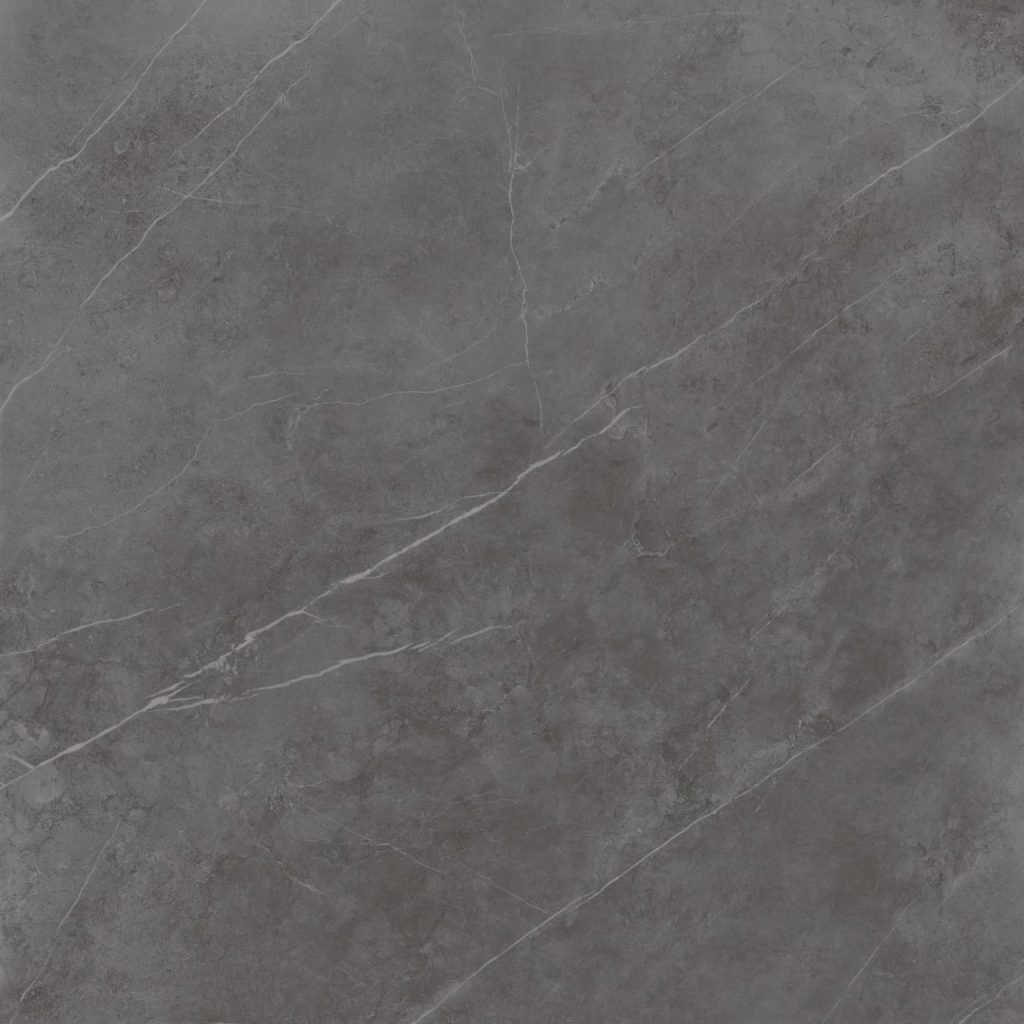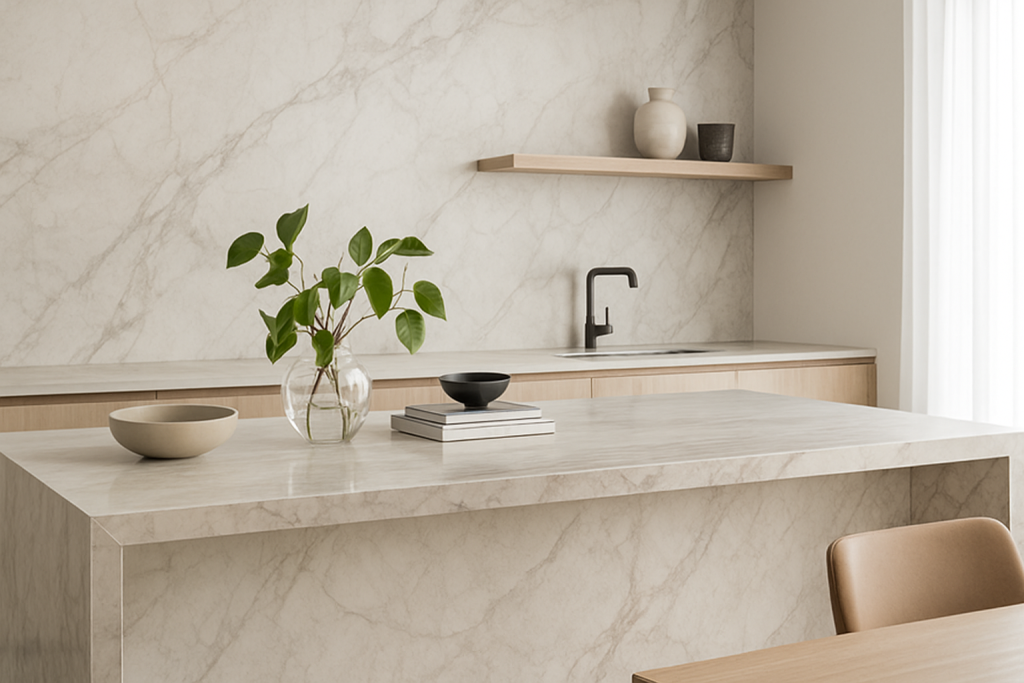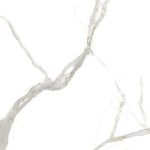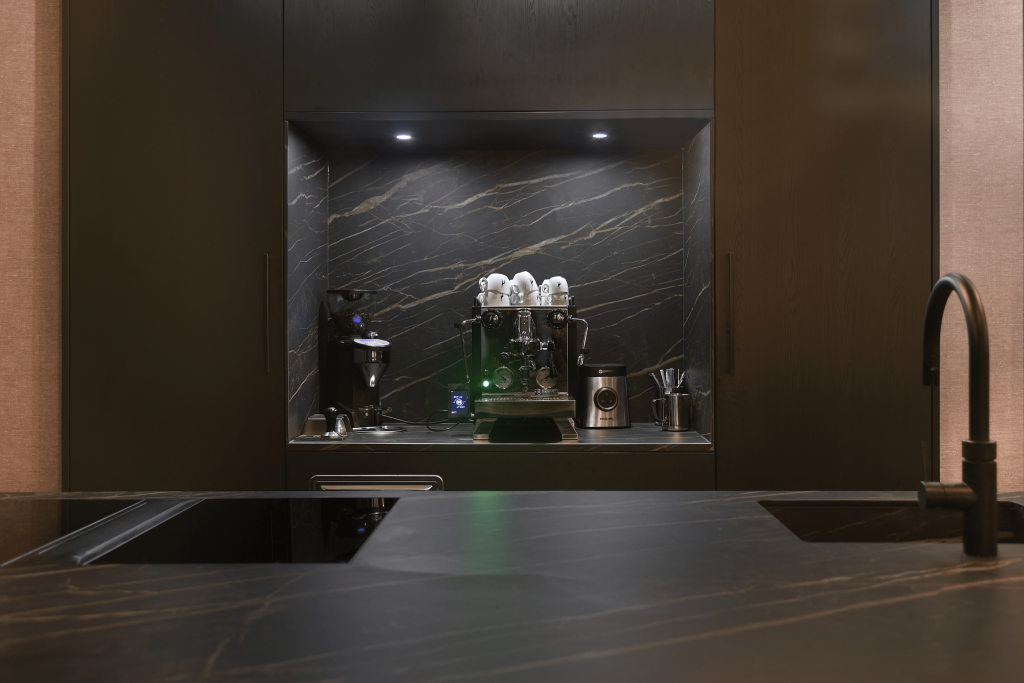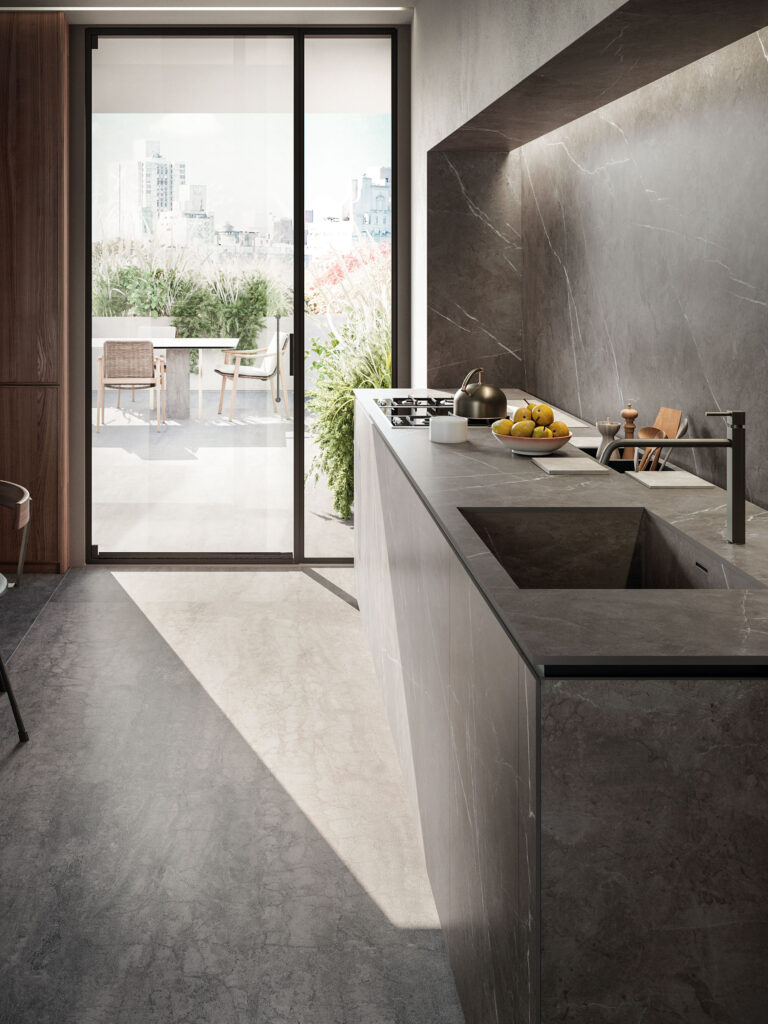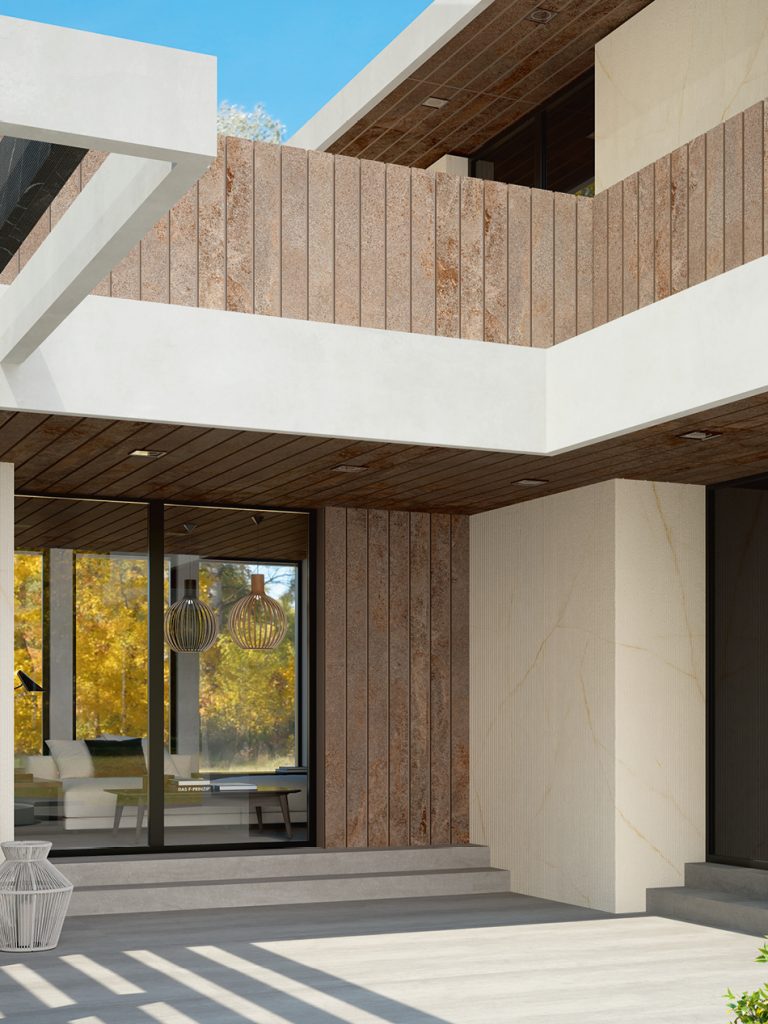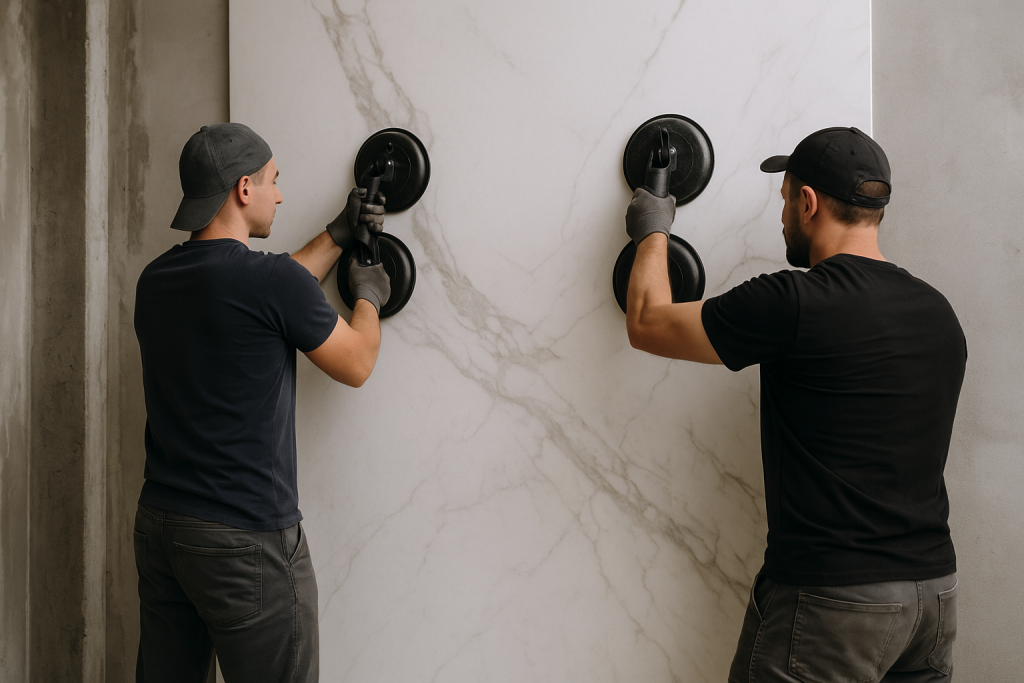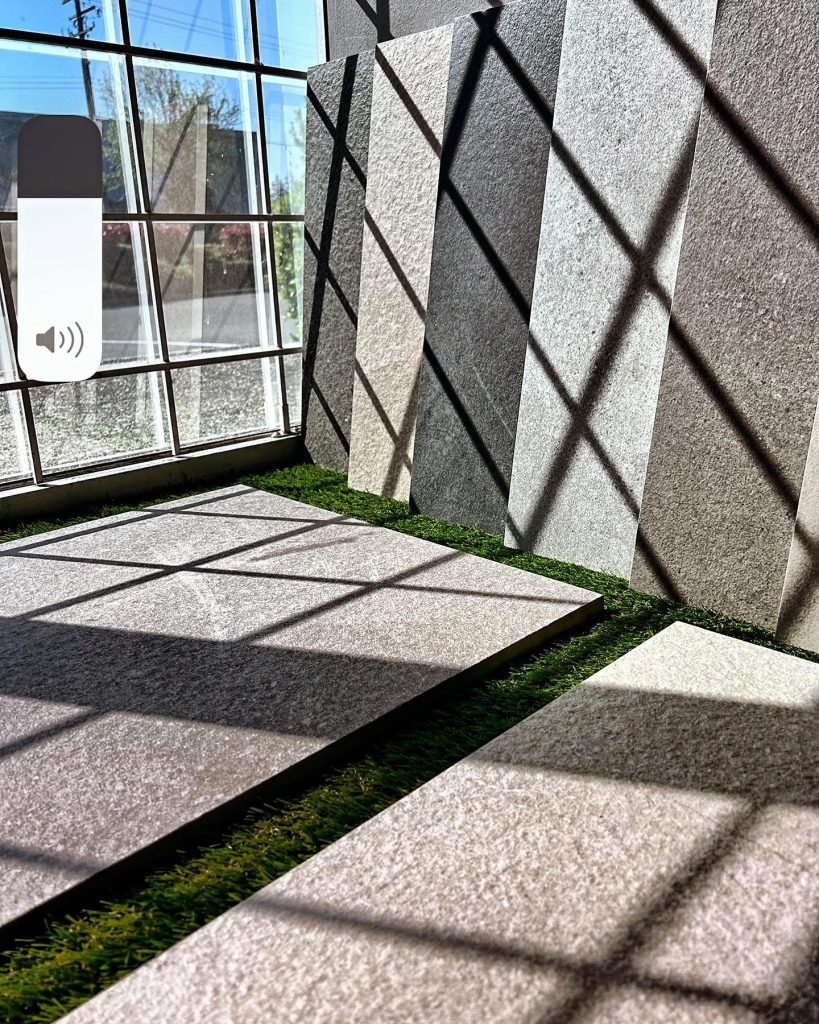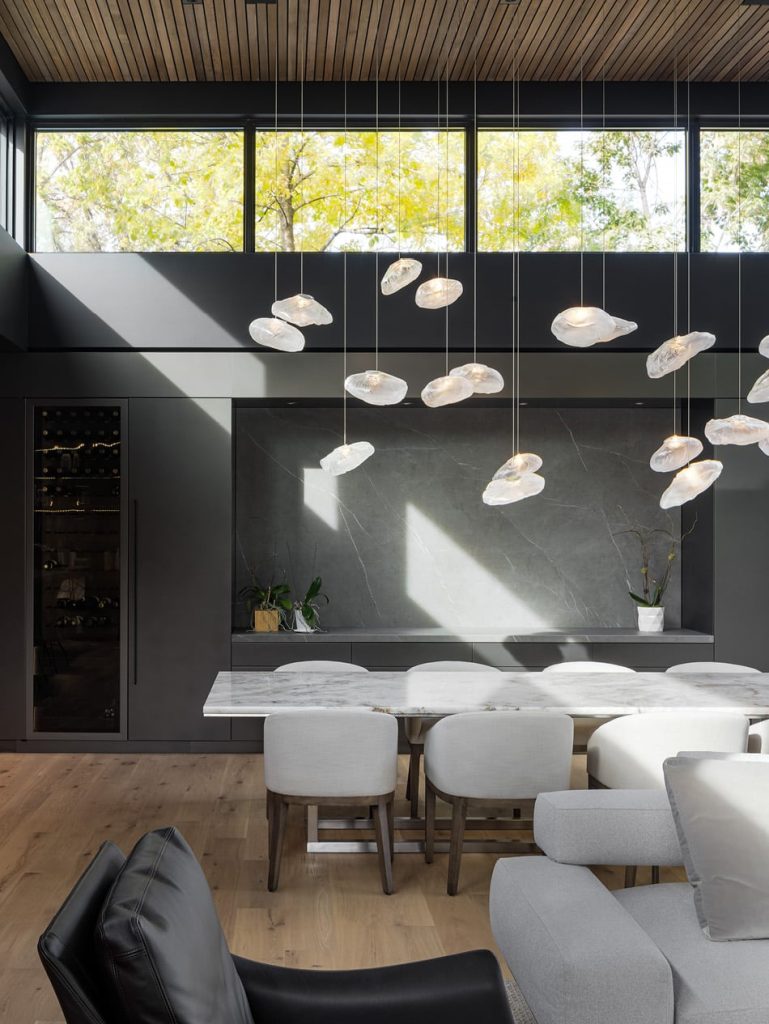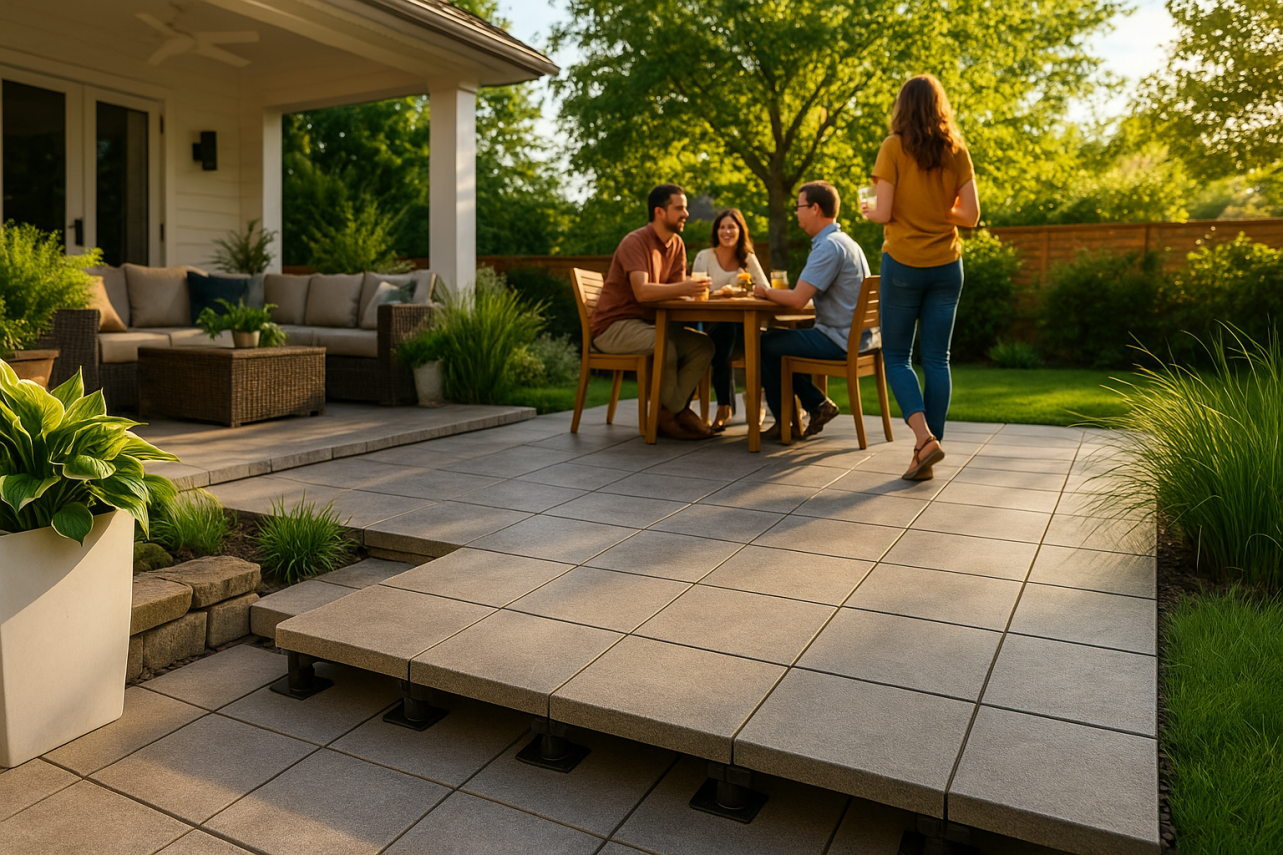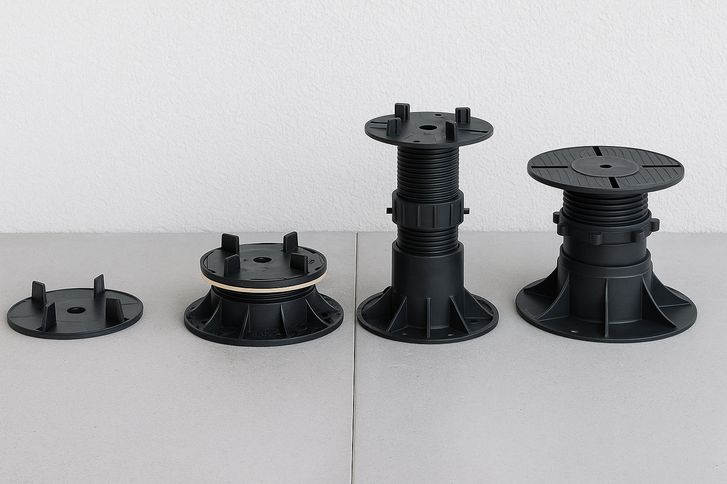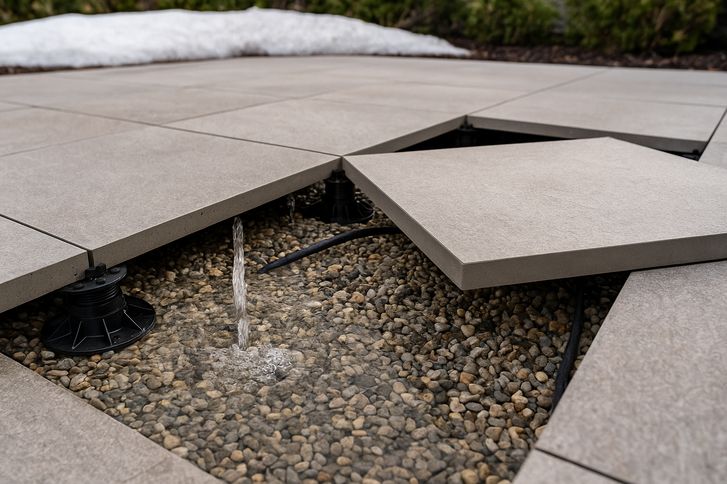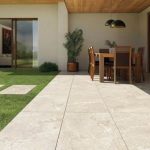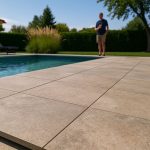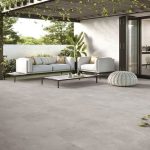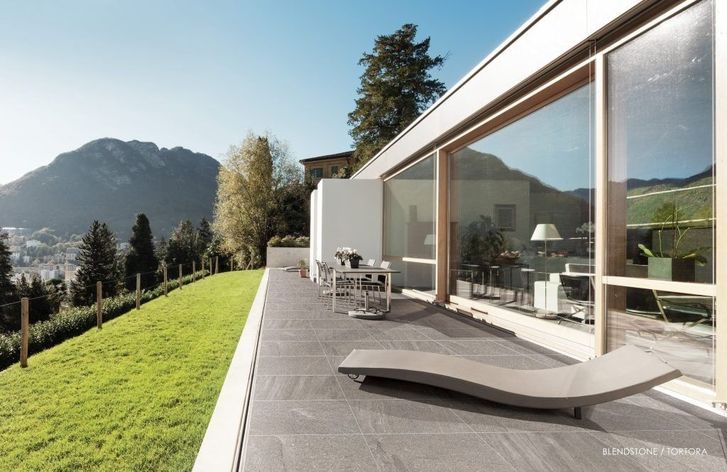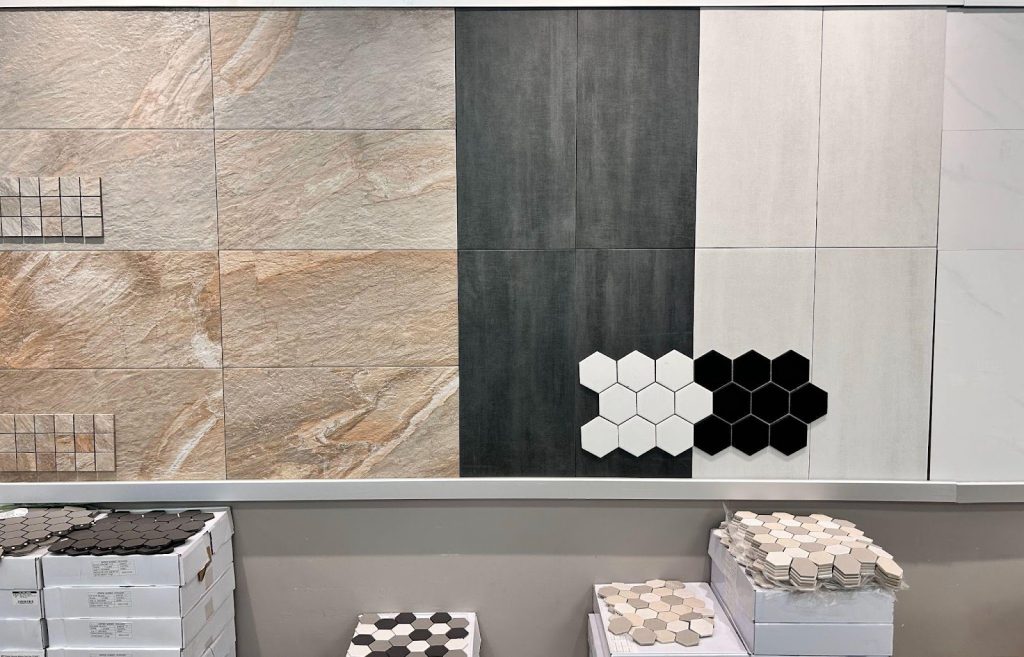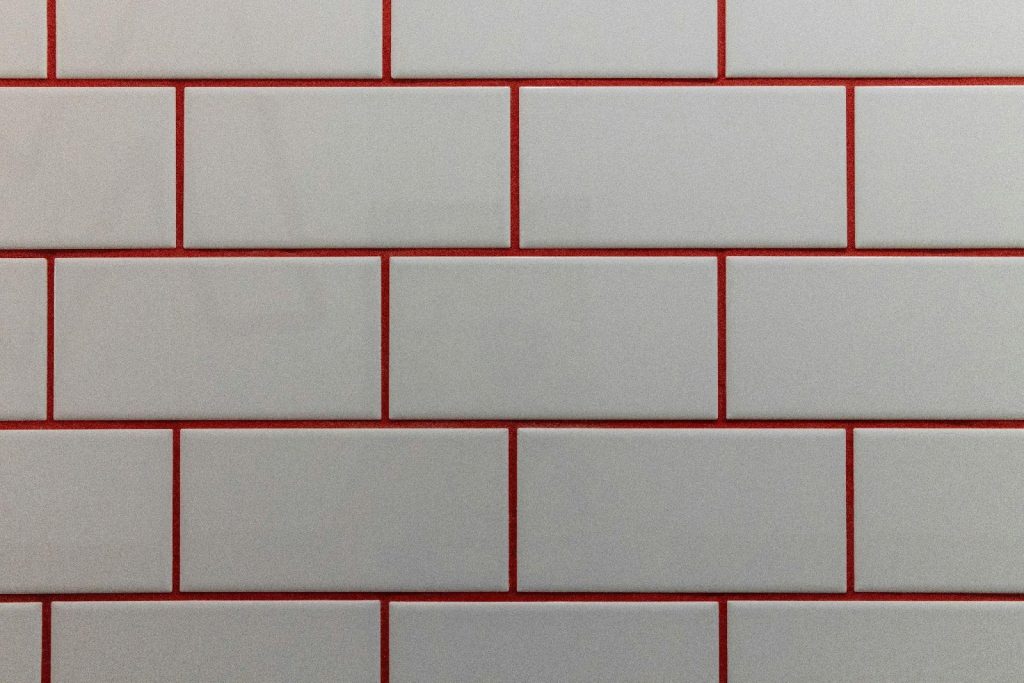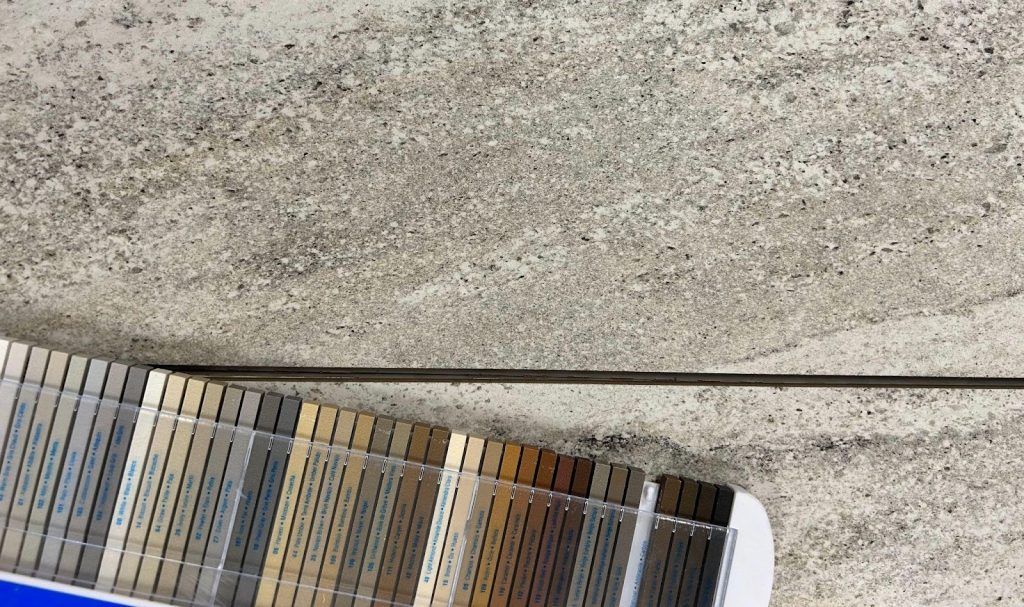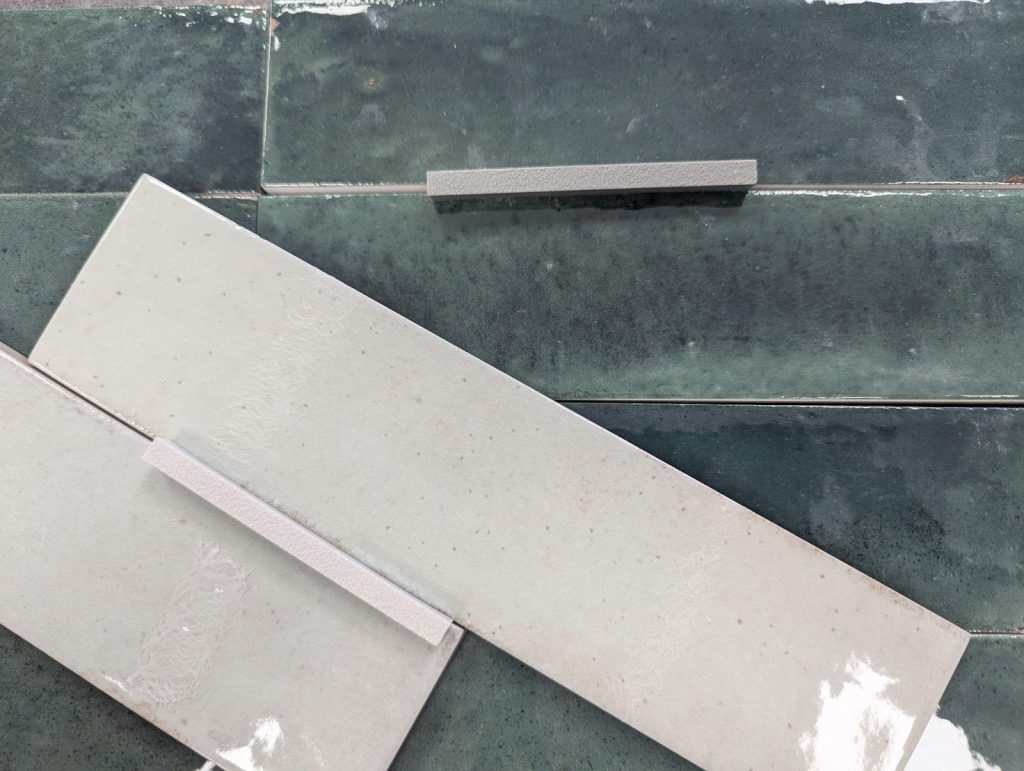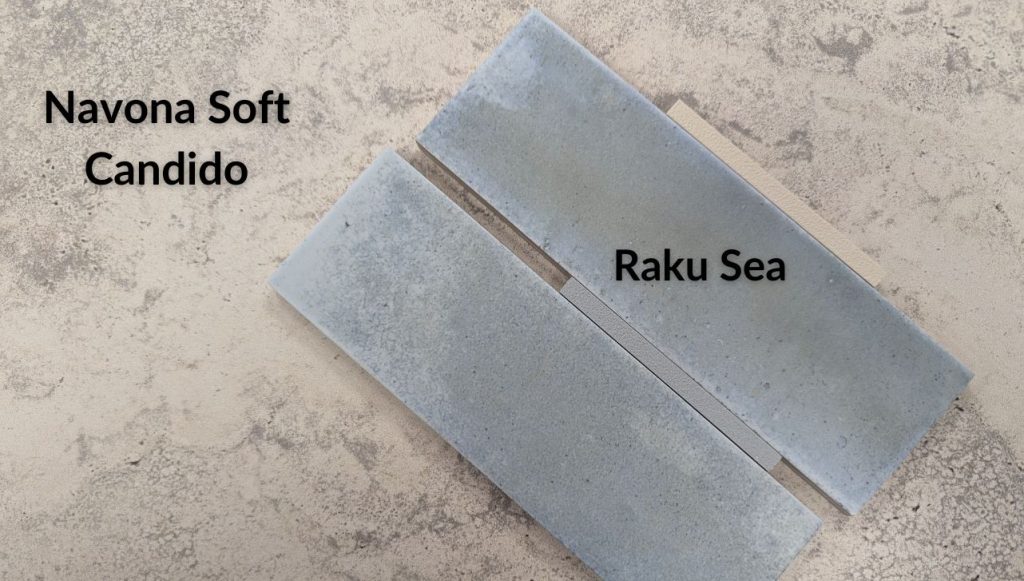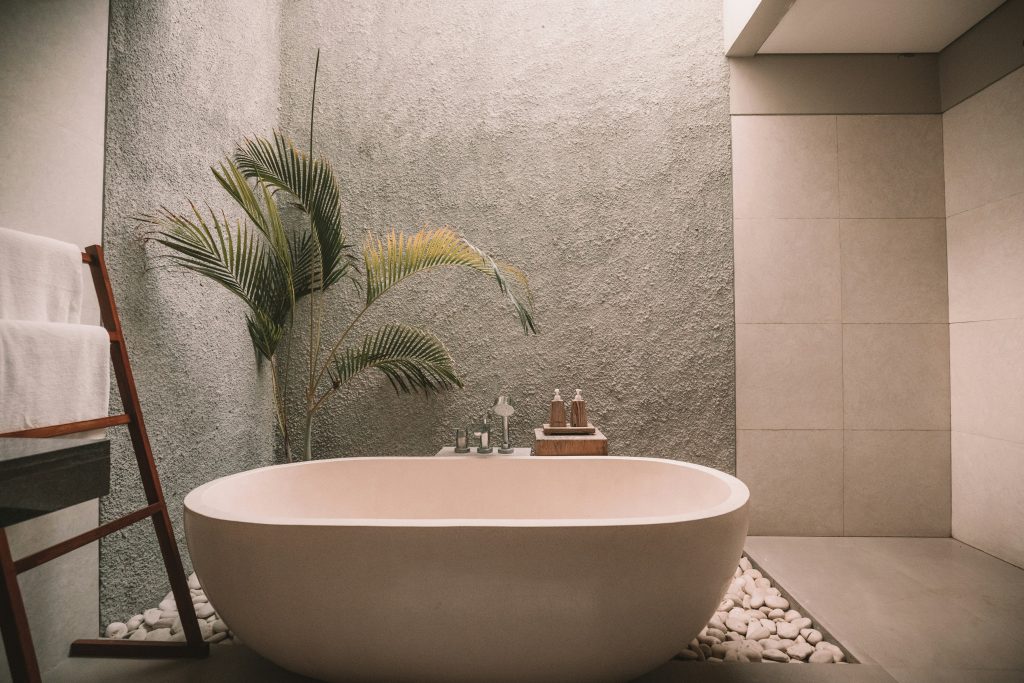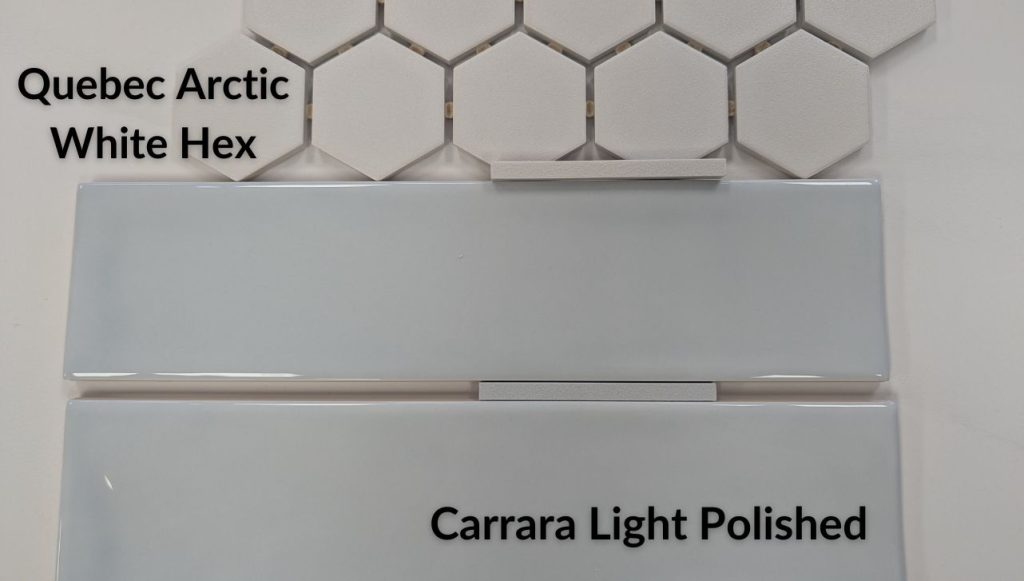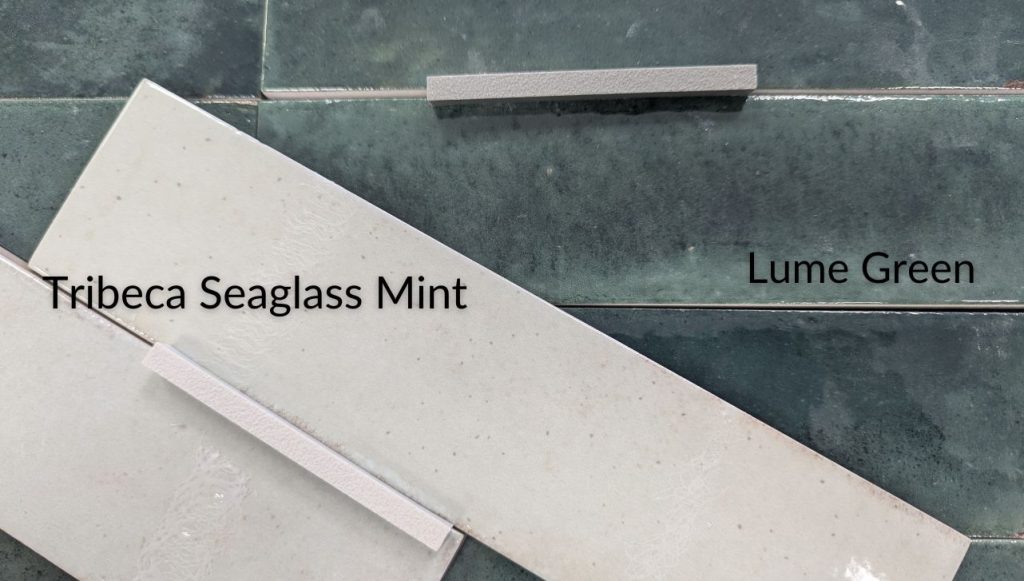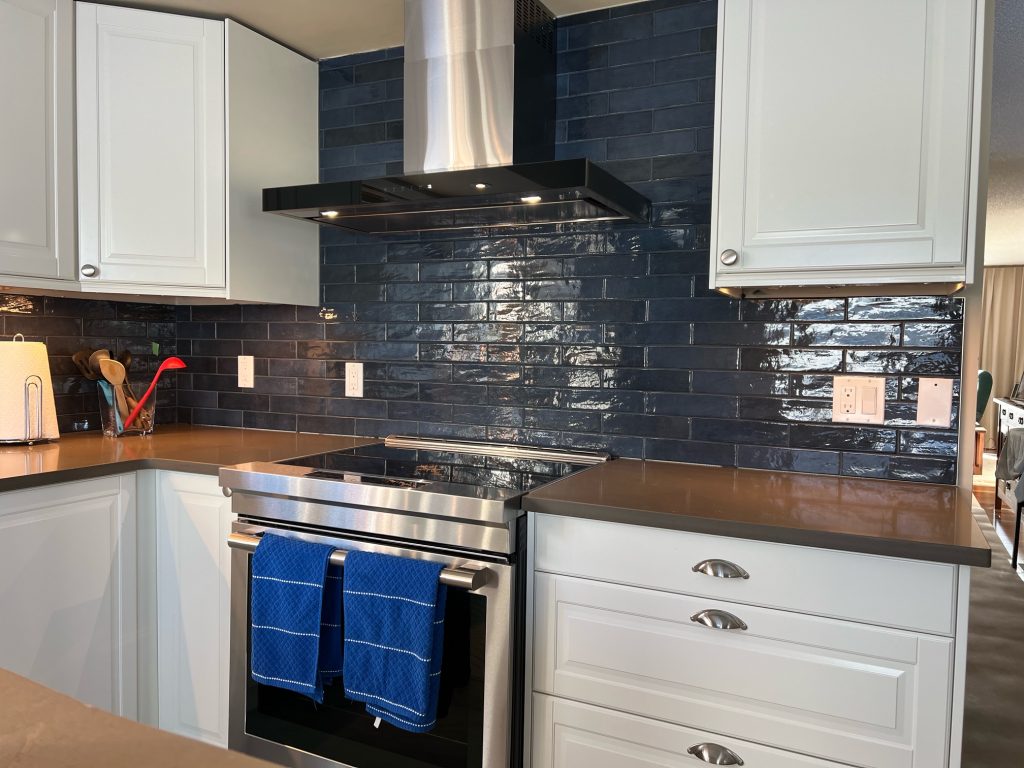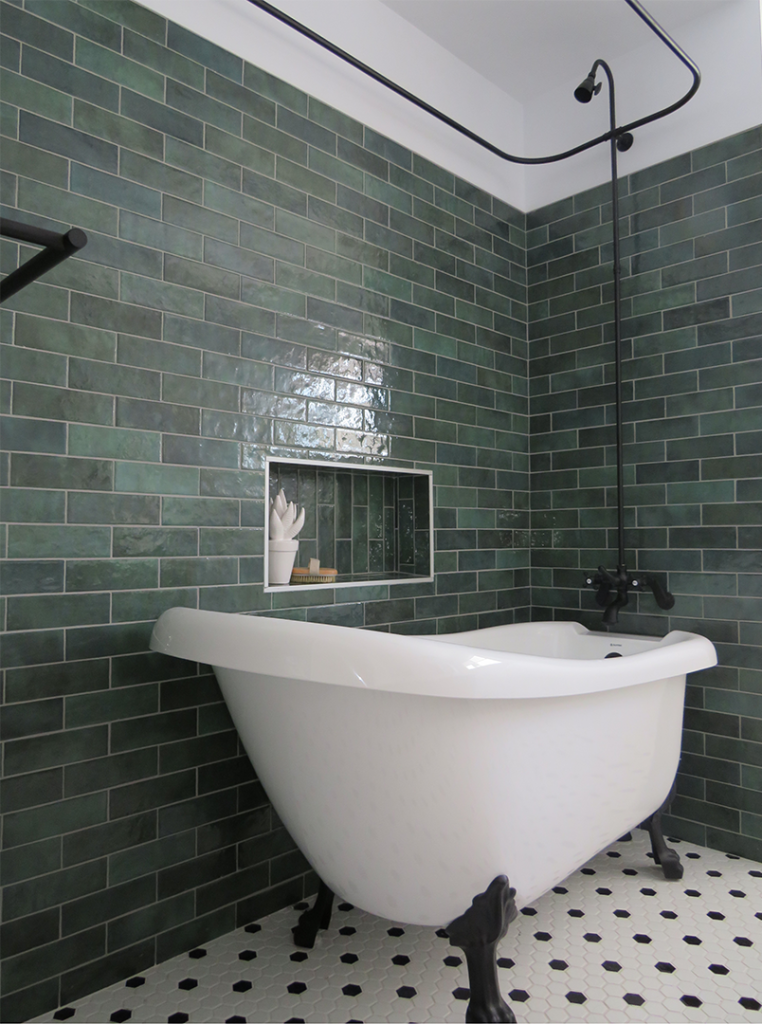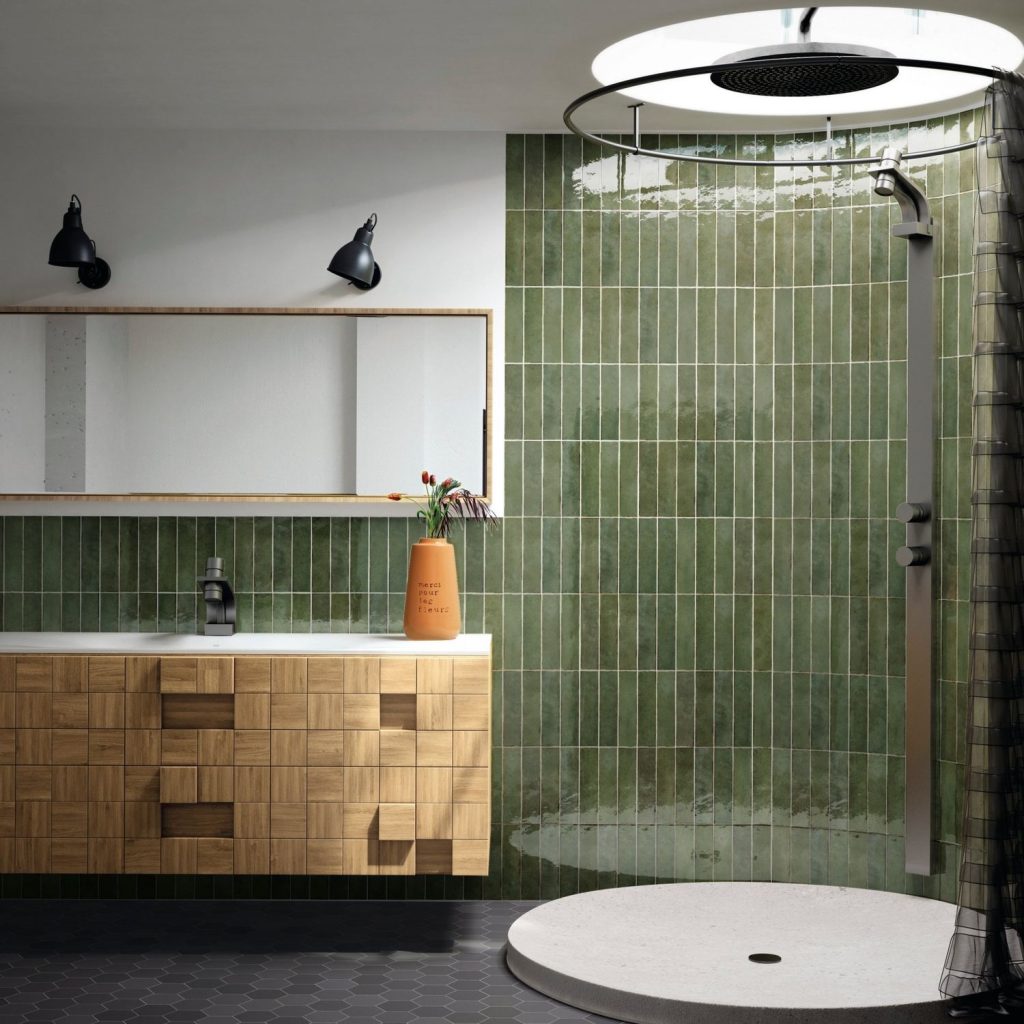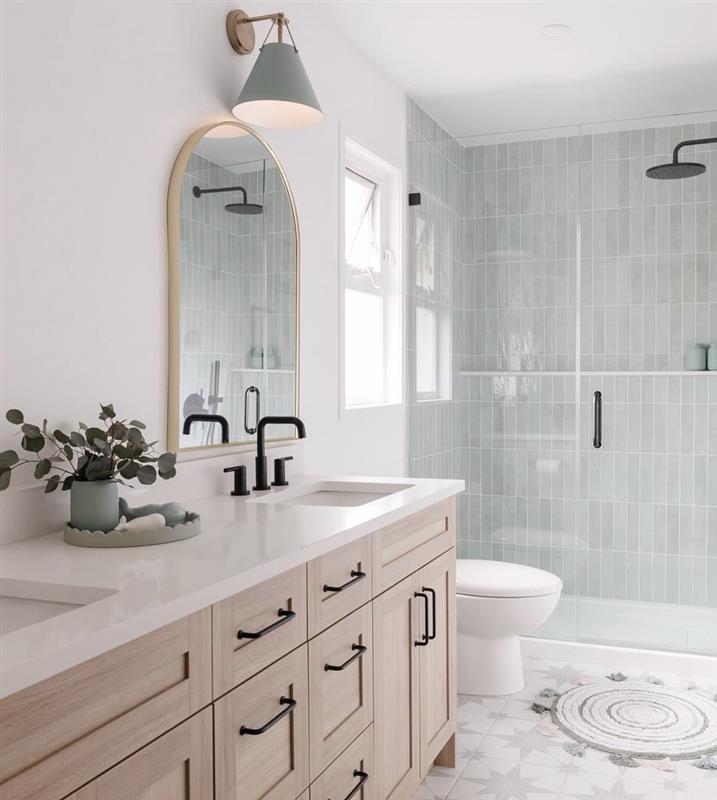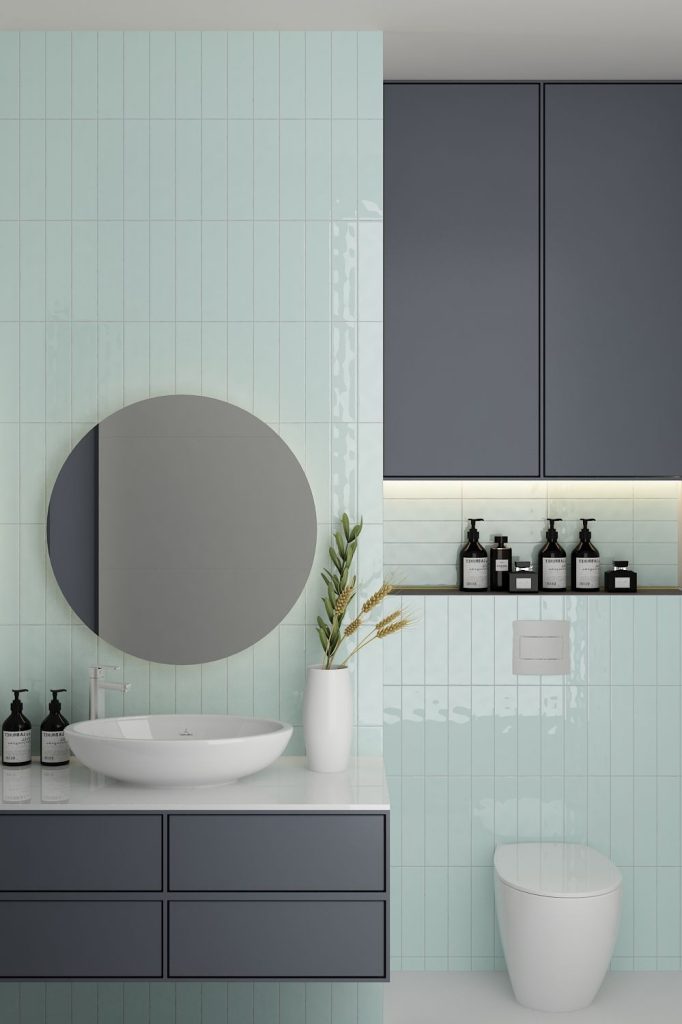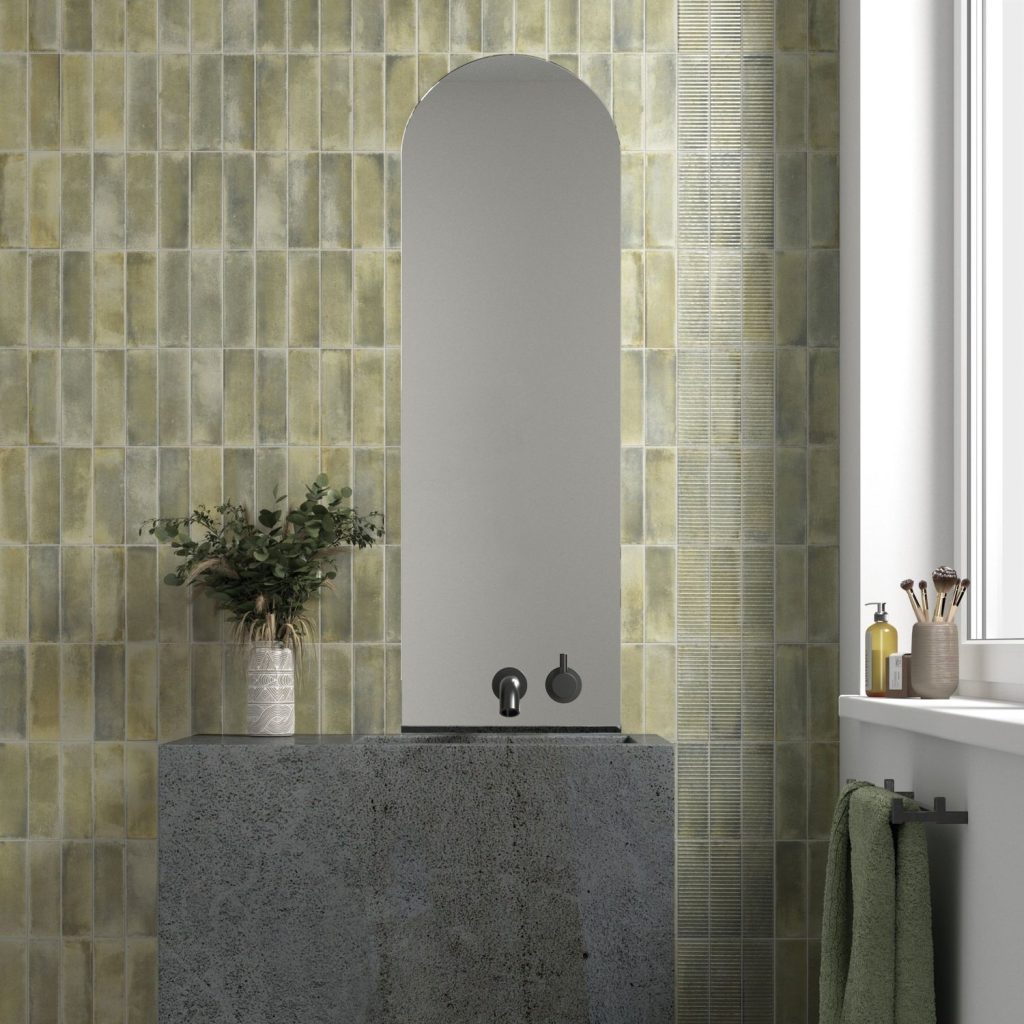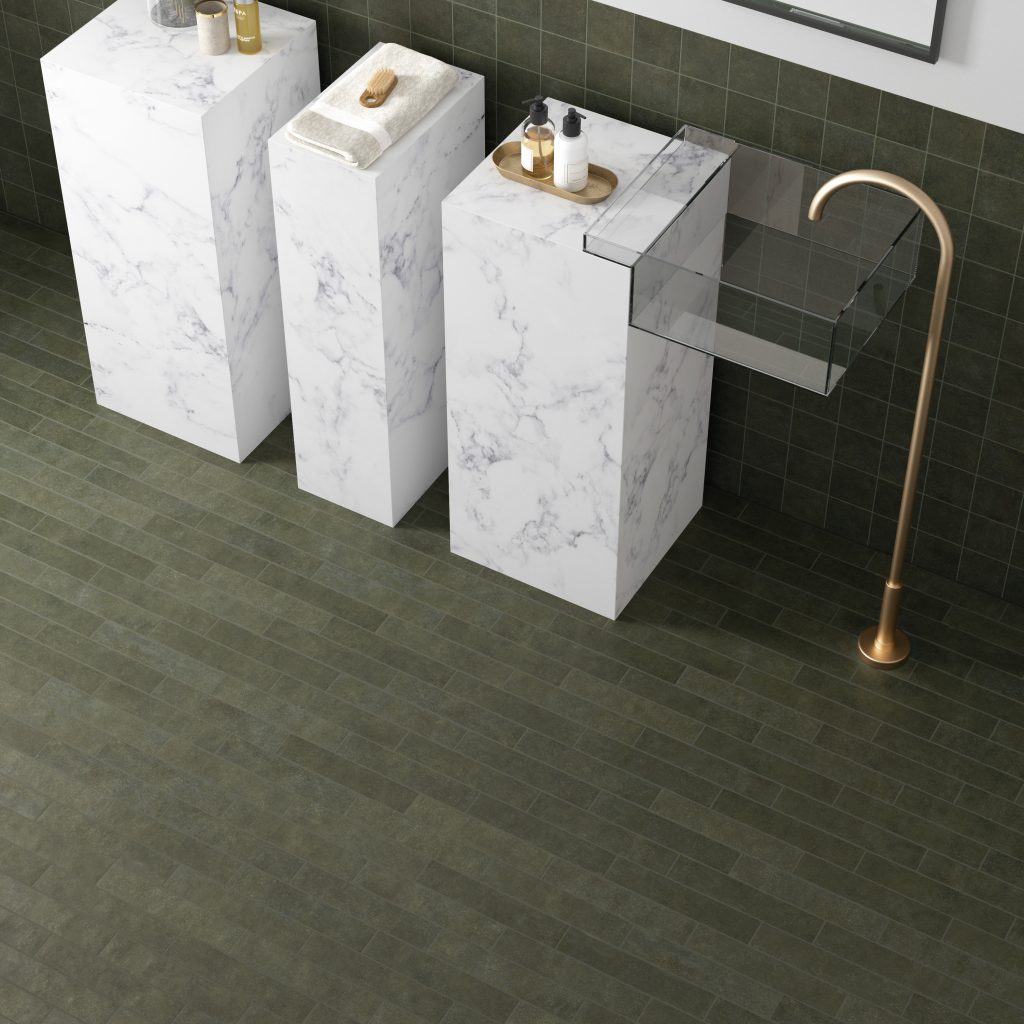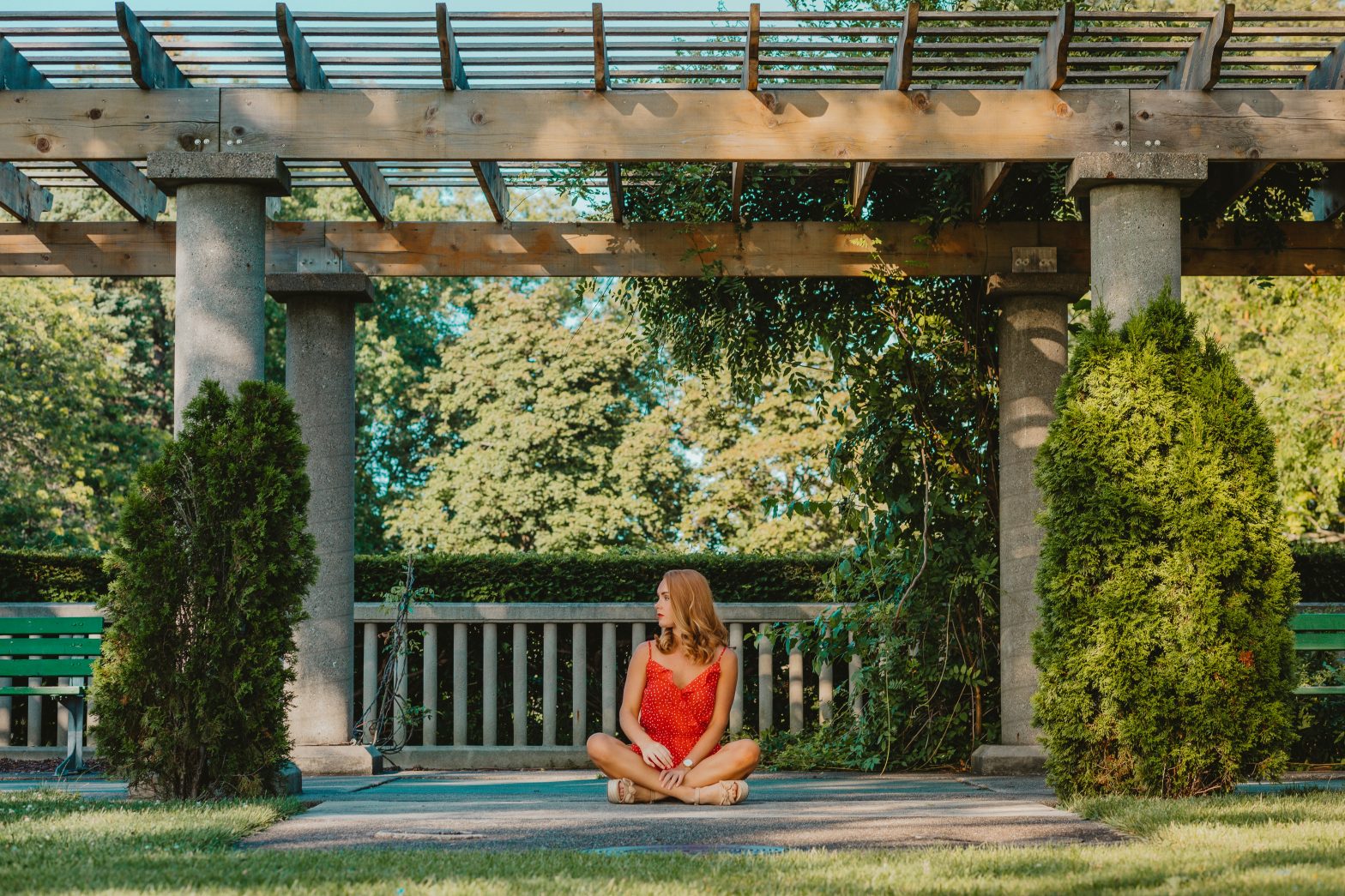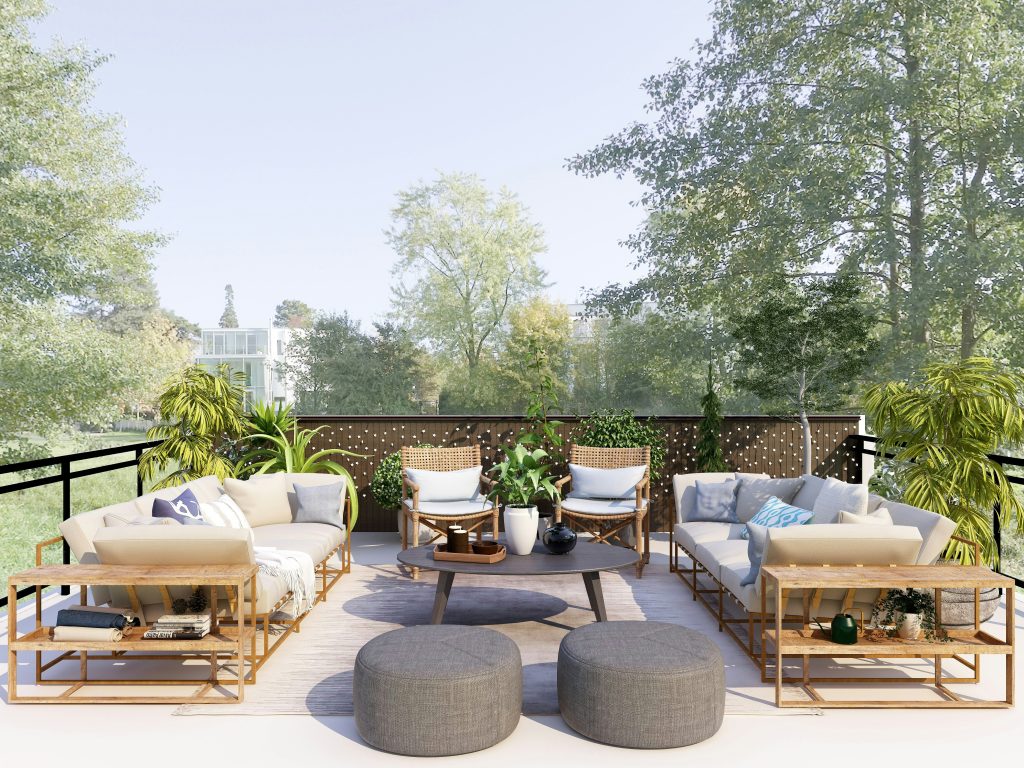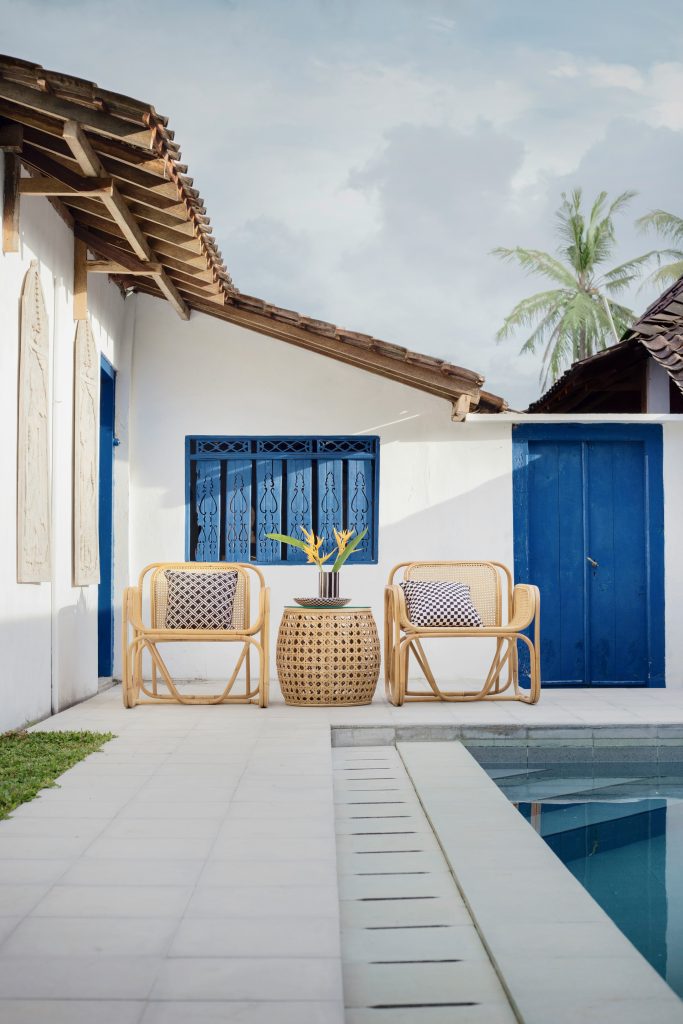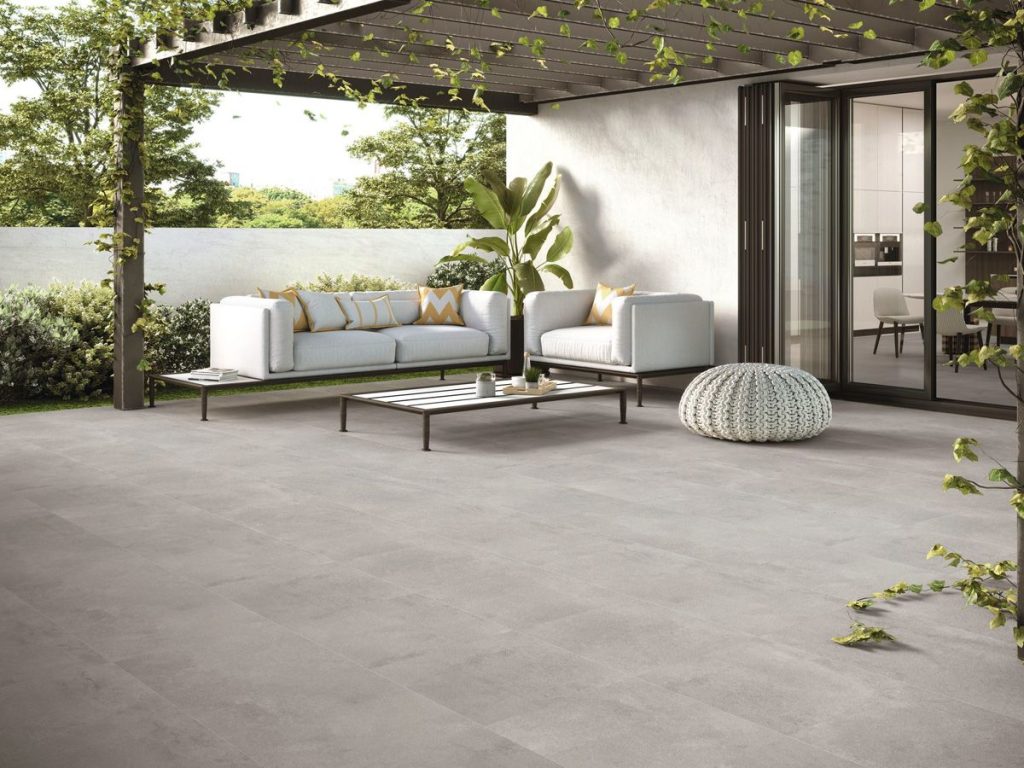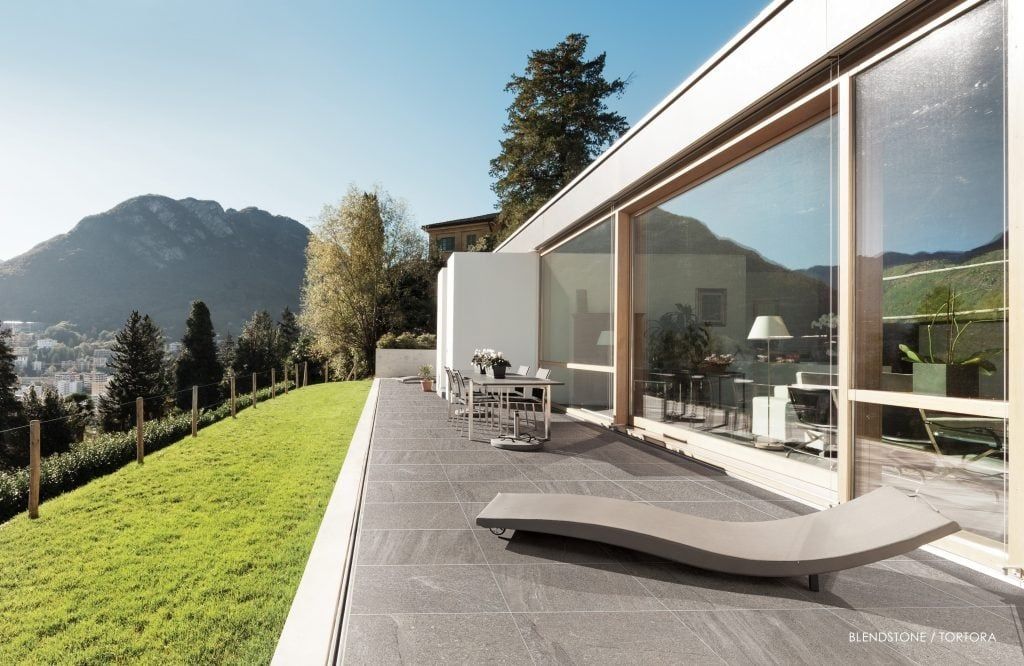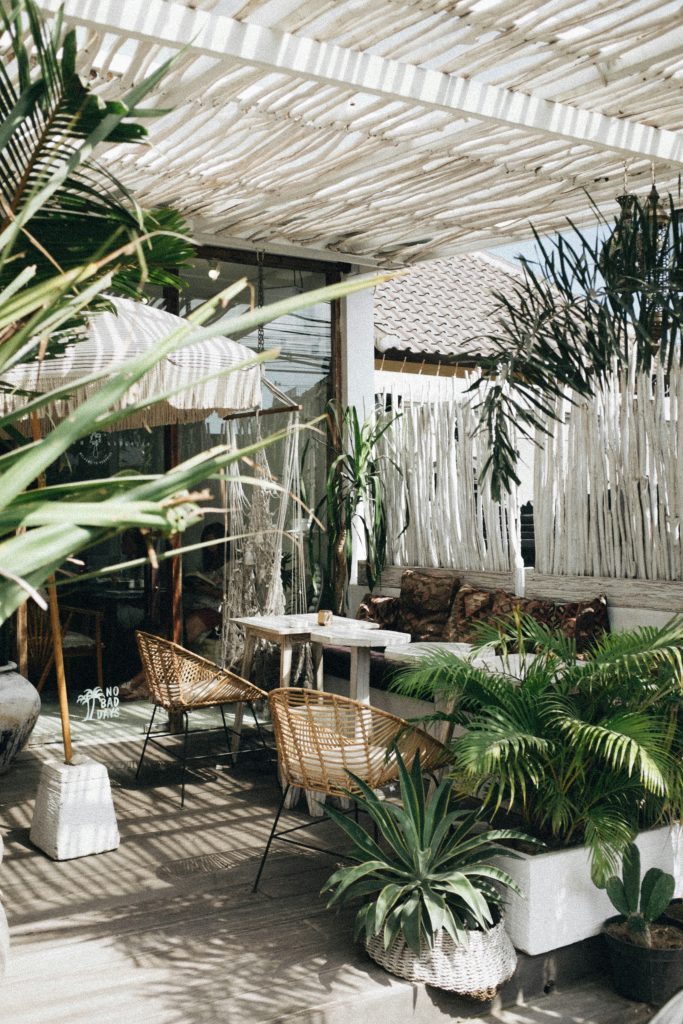It’s that time of year again! We’re looking back at the design hits that stole the show and defined home renos in 2024. Welcome to your TileTown Unwrapped Playlist—the best, boldest and most-loved tiles of the year. These are the tiles you couldn’t get enough of—showing up in renovations, feature walls and design dreams across the board. Who snagged the top spot? (Think: the Taylor Swift of tiles.) Spoiler alert: This year’s star tiles all share one standout quality—timeless, organic beauty. Let’s unwrap the hits!
5th. Subtle Sophistication: Goya Polished 12×24
Rounding out our top five is our Goya porcelain in a polished finish. Its luxe, faux-marble surface brings elegance and natural beauty to any space. Whether featured in a grand entryway or a spa-like bathroom, this tile guarantees a refined, timeless look.
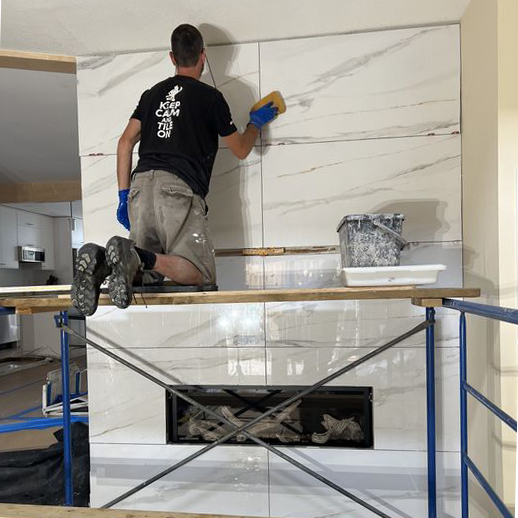
CREDIT: Facebook: The Micromason (repping our shirt too!)
4th. Light Bright: Tribeca Gypsum White 2.5×10
This glossy porcelain subway tile shone bright in 2024, lending its artisanal charm to everything from mid-century modern kitchens to eclectic bathrooms. With its worn edges, tonal variation and radiant surface, it’s like inviting the perfect amount of sunlight into your space—warm, bright and effortlessly stylish.
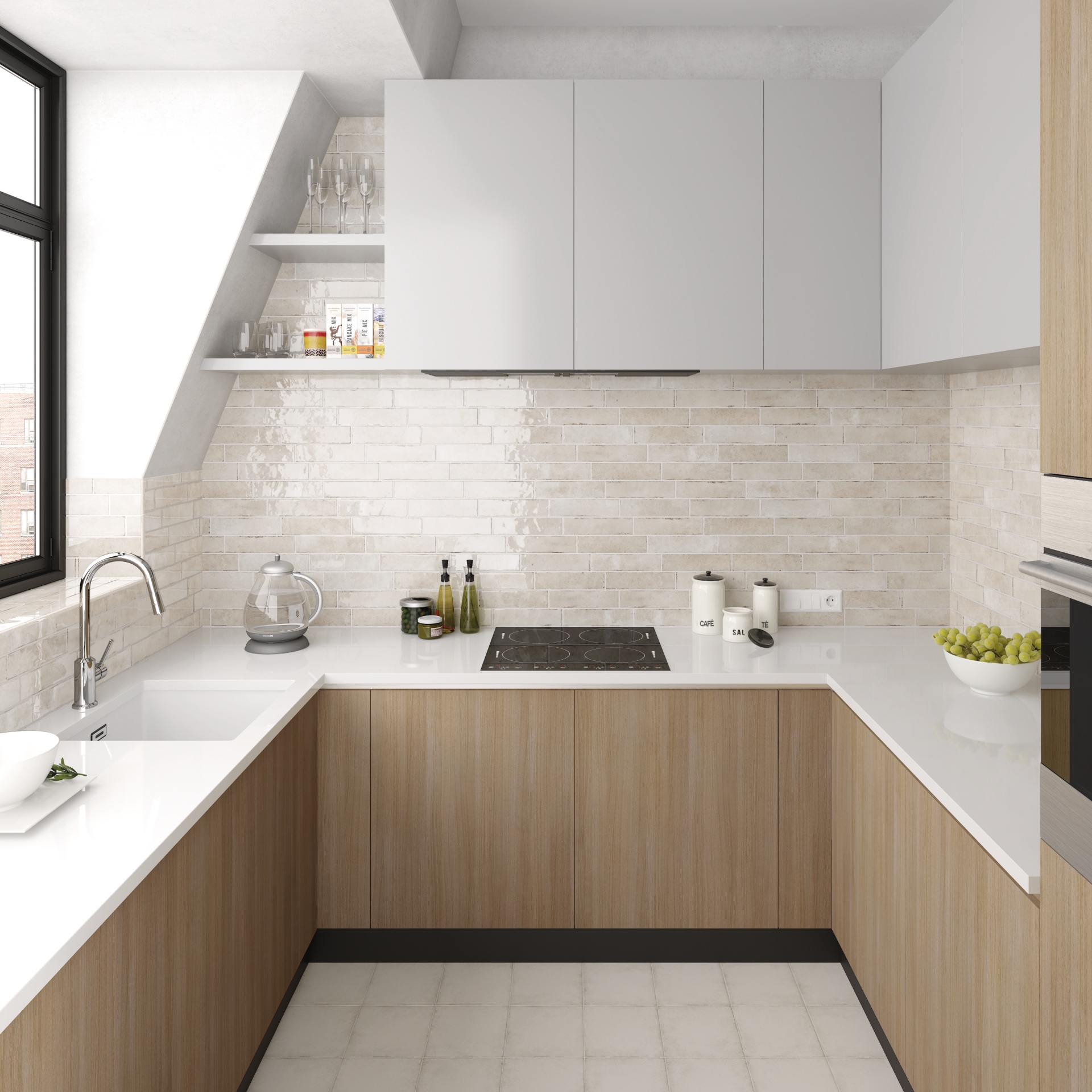
3rd. Faux and Fierce: Goya Matte 12×24
Simple. Elegant. Versatile. The Goya Matte tile delivers the look of marble without the fuss. Its natural matte finish pairs beautifully with just about any design style, adding understated sophistication to walls and floors alike. It’s no wonder this one stayed at the top of your playlists all year long.
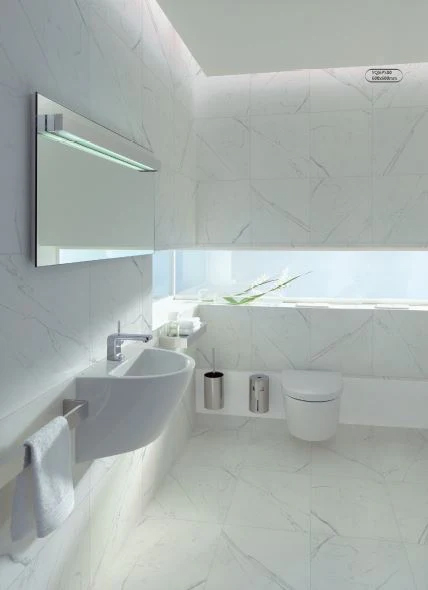
2nd. You’re So Vein: Utah Glacier 12×24
Coming in hot (or cool?) is the Utah Glacier 12×24 glazed porcelain tile. Think of it as bringing Utah’s stunning landscape indoors: soft greys, whites and desert beiges that echo rugged canyons and glacial rock formations. Its stone-like texture and natural veining create a perfect balance of rustic and refined, making it an undeniable fan favourite for both indoor and outdoor spaces.
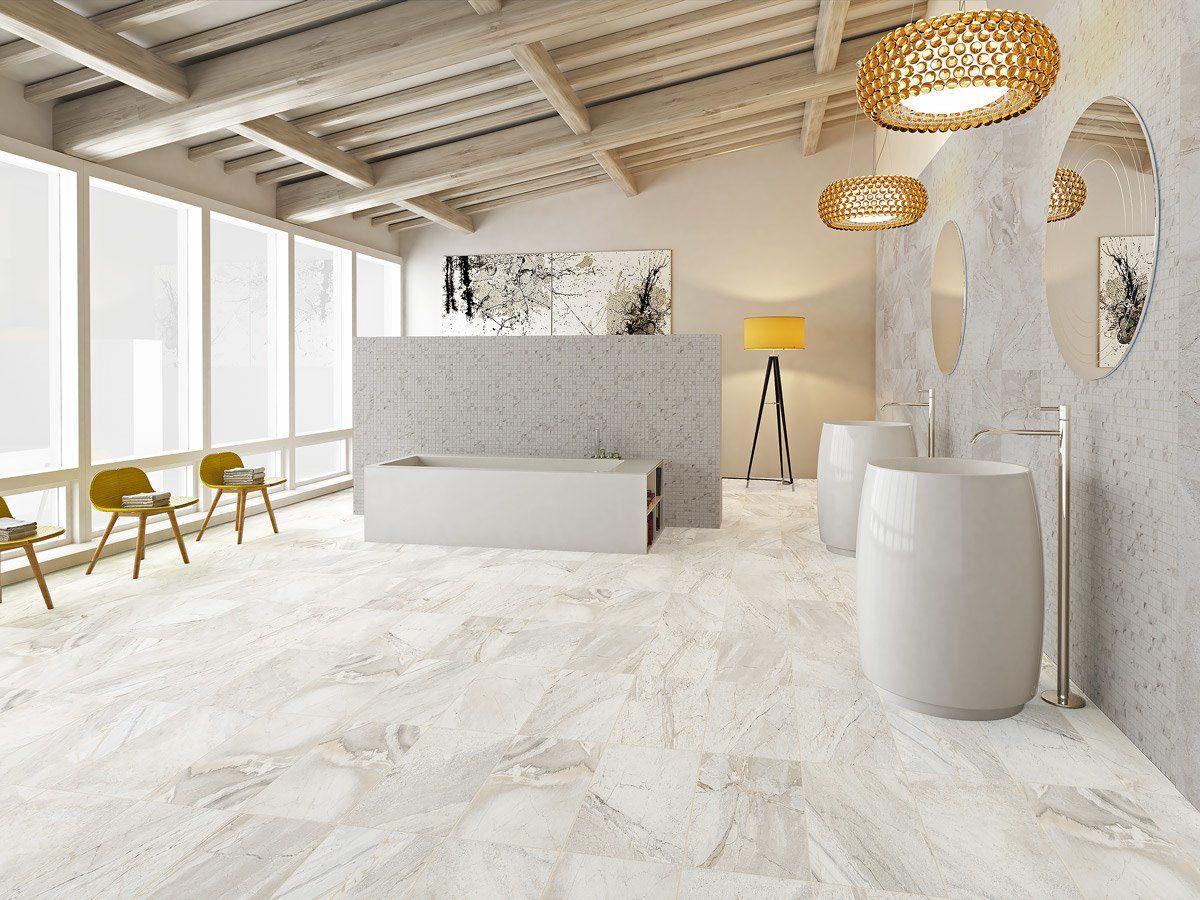
1st place! Simple Serenity: Artisan White Glossy (2.5 x 8)
This classic glossy ceramic wall tile from Spain topped our charts for the second year in a row—and it’s easy to see why. Its clean, coastal-inspired look brings effortless charm to mid-century modern and minimalist spaces alike. Consider it the design equivalent of a timeless hit that never goes out of style—always chic, always in rotation.
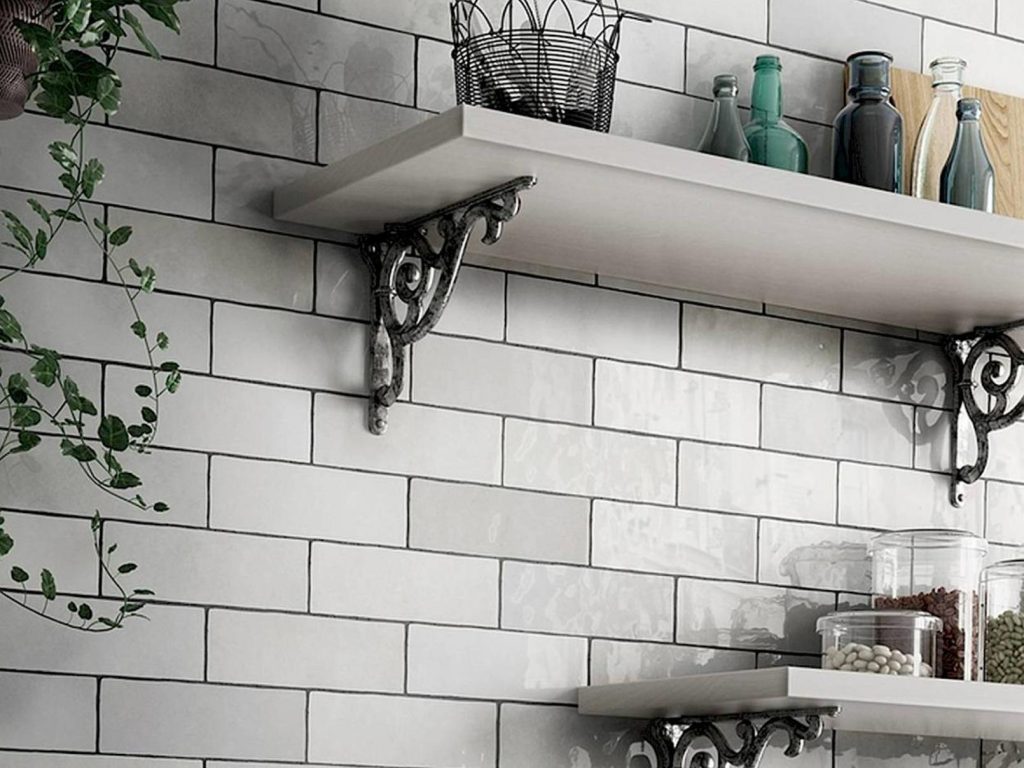
Happy Holidays from our TileTown family to yours—see you in 2025!
The Verdict: White, organic-inspired tiles stole the show this year, proving that timeless, natural beauty never goes out of style. We can’t wait to see what makes next year’s best-of list.
